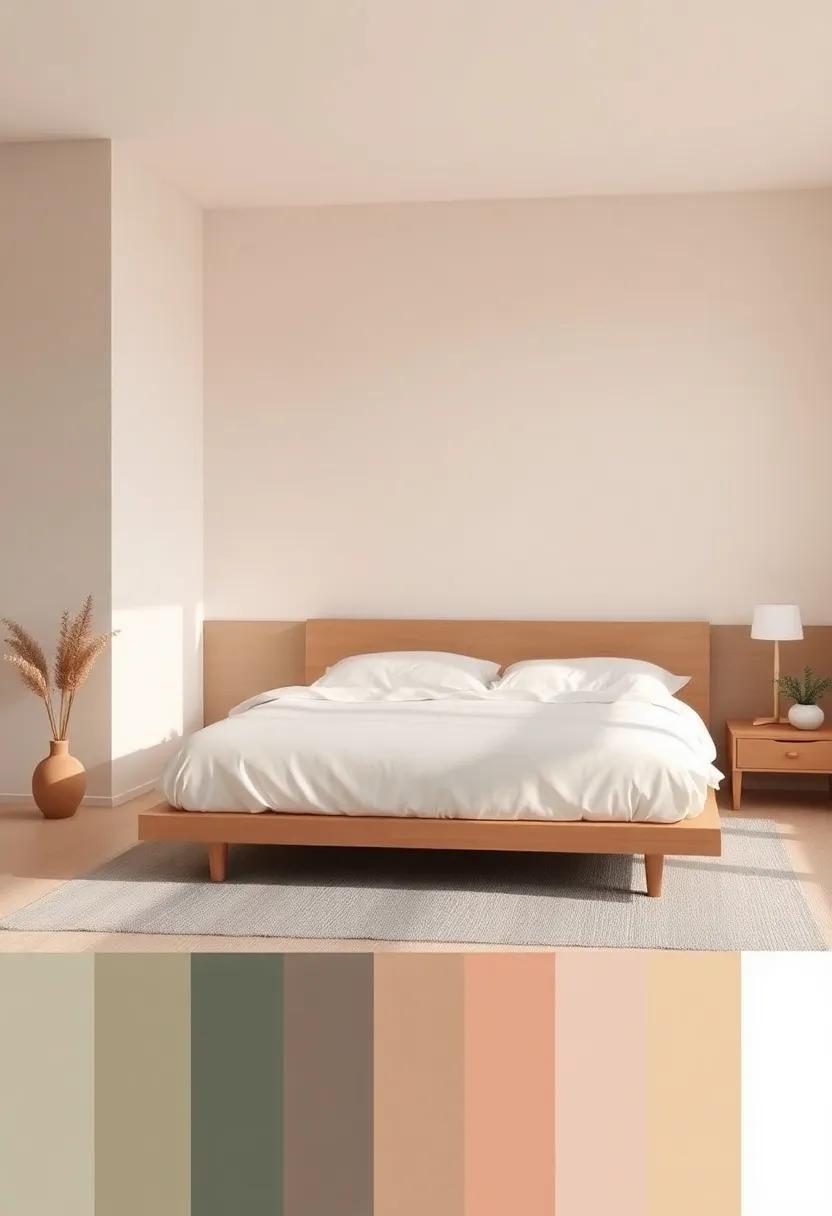In the fast-paced world we inhabit, the pursuit of tranquility often leads us to seek solace in our personal spaces. One such refuge is the bedroom, a sanctuary where we can unwind and rejuvenate.Japanese-style bedrooms, with their serene aesthetics and minimalist design, offer a unique approach to creating a peaceful environment. Central to this ambiance is the intentional use of color, a harmonious palette that evokes calm and clarity. In “,” we delve into the principles of color selection that define this tranquil style. From the gentle earth tones reminiscent of nature to the soothing pastels that invite relaxation, we will uncover how these hues work together to transform a bedroom into a serene oasis. Join us as we explore the artistry behind color in Japanese interiors and discover how you can incorporate these tranquil palettes into your own living spaces.
Exploring Zen Aesthetics in Japanese-Style Bedroom Design
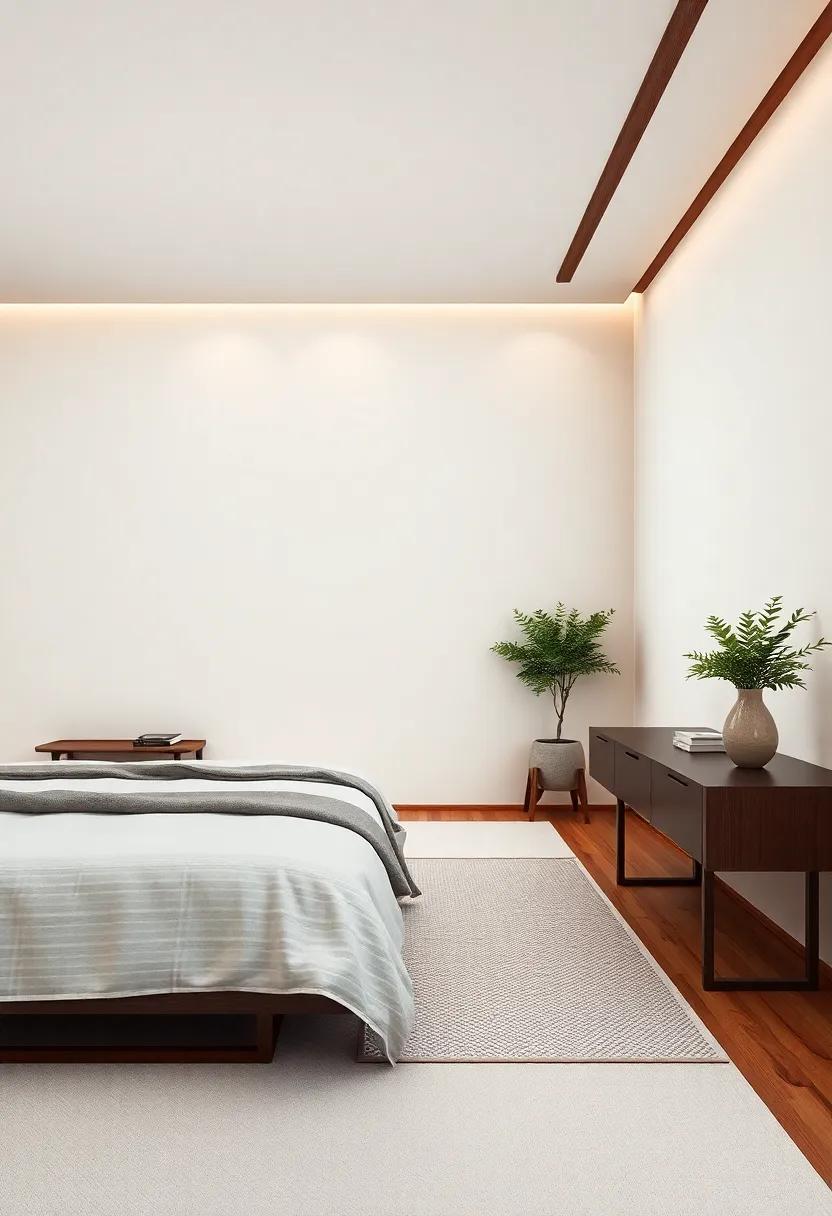
Delving into Japanese-style bedroom design reveals a serene world where nature and simplicity coalesce to create calming environments. Central to this aesthetic is the use of tranquil colors, which encourage peace and mindfulness.Soft shades of cream, muted greens, and warm browns invite daylight, mimicking the natural palette found in traditional Japanese landscapes. These hues serve not merely as wall paint but as a reflection of the environment, facilitating a connection between the indoors and the outside world. the careful selection of colors helps in establishing a tranquil atmosphere where each room functions as a retreat, promoting relaxation and introspection.
Complementing the subdued color palette, the incorporation of natural materials plays a notable role in enhancing the aesthetic appeal. Elements such as wood, rice paper, and stone are often featured in furniture and decor, further anchoring the room in the principles of Zen. Consider integrating items such as:
- tatami mats for an authentic flooring experience
- Shoji screens that allow soft light to filter through
- Minimalist furnishings that encourage uncluttered spaces
This commitment to natural textures not only elevates the visual palette but also creates tactile experiences that resonate with Japanese culture, fostering an environment of deep tranquility and harmony.
Subtle Undertones of Nature: Integrating earthy Hues
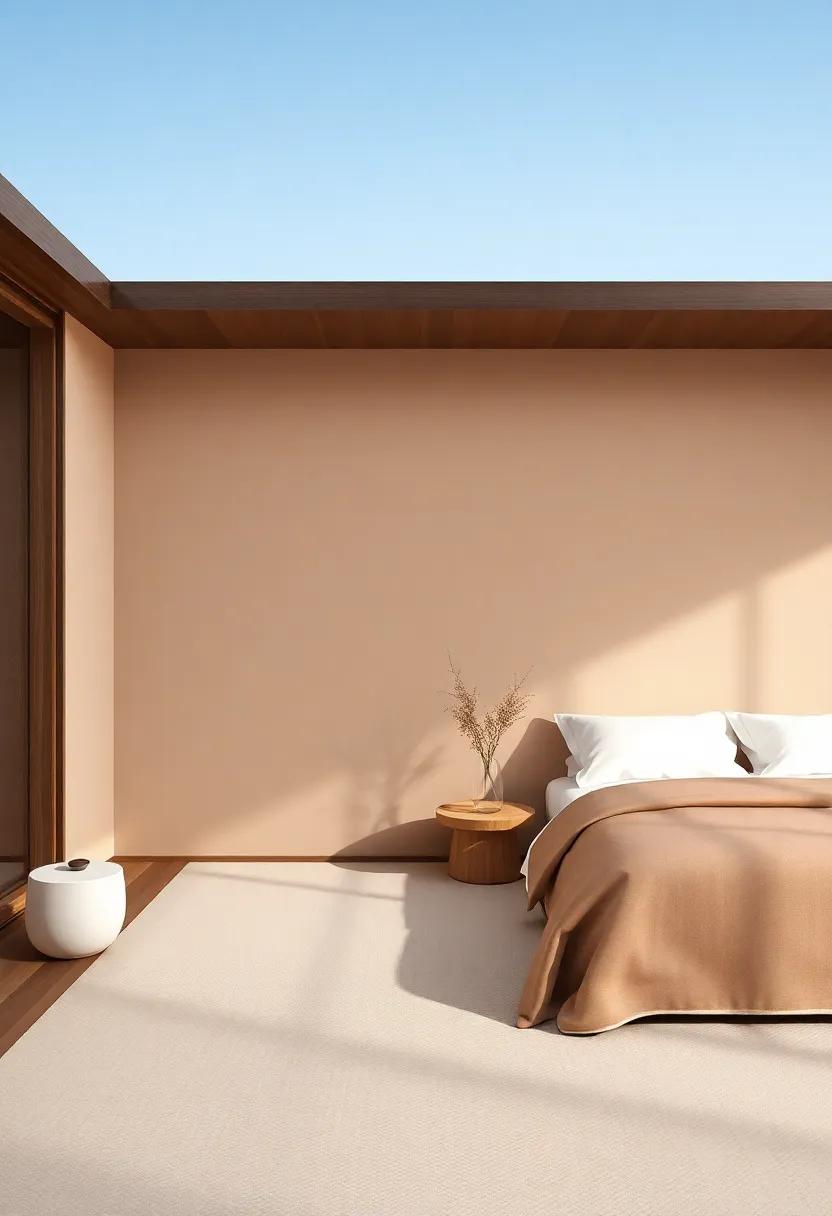
In the serene landscape of Japanese-inspired interiors, earthy hues evoke a connection to the natural world, anchoring the space in tranquility. These tones—ranging from soft terracottas to muted greens—create a canvas that invites relaxation and mindfulness. When employed thoughtfully, they can enhance the aesthetic of a bedroom, making it a sanctuary for rest and rejuvenation. Consider incorporating the following colors to achieve a balanced atmosphere:
- Warm Terracotta: A rich, grounding shade that adds warmth.
- Forest Green: Brings the essence of nature indoors and offers a calming effect.
- Sandy Beige: Provides a neutral base,allowing other colors to shine.
- Dusky Blue: Evokes the sky and water,promoting serenity.
Integrating these subtle undertones can be managed through various elements of decor. Textiles, wall paint, and artwork can harmonize with these color choices, creating a cohesive theme throughout the room. A simple yet impactful way to display this integration is through the use of plants and natural materials. Below is a succinct overview of complementary decor elements that can enhance earthy hues:
| Element | Purpose |
|---|---|
| wood Accents | Adds warmth and organic texture. |
| Textured Fabrics | Enhances comfort and visual interest. |
| Natural Light | Brightens and amplifies earthy tones. |
| Indoor Plants | Brings life and color, promoting tranquility. |
The Calm Impact of Soft Pastel Colors on Sleep Quality

Soft pastel colors envelop a space in a gentle embrace, creating an atmosphere that promotes relaxation and serenity. Research suggests that these hues—such as pale blues, muted greens, and tender pinks—are visually soothing, helping to reduce stress and anxiety levels. Subtle shades can enhance the ambiance of a bedroom, turning it into a personal retreat conducive to restful sleep. incorporating these colors not only influences the mood but also sets the stage for a tranquil night’s sleep, allowing for a harmonious balance between body and mind.
In a Japanese-style bedroom, the emphasis on minimalism and nature is complemented by the use of soft pastels. These colors can be easily introduced through various elements such as:
- Wall paints in gentle lavender or sky blue
- Bedding adorned with light, calming patterns
- Decorative accessories like cushions and throws in soft beige or mint green
By creating a soothing visual palette, one is encouraged to unwind and embrace a peaceful environment. The soft interplay of these colors with natural light further enhances the calming effect, making a Japanese-style bedroom an ideal sanctuary for restoring energy and achieving quality rest.
Minimalist Elegance: essential Elements of Japanese Bedrooms
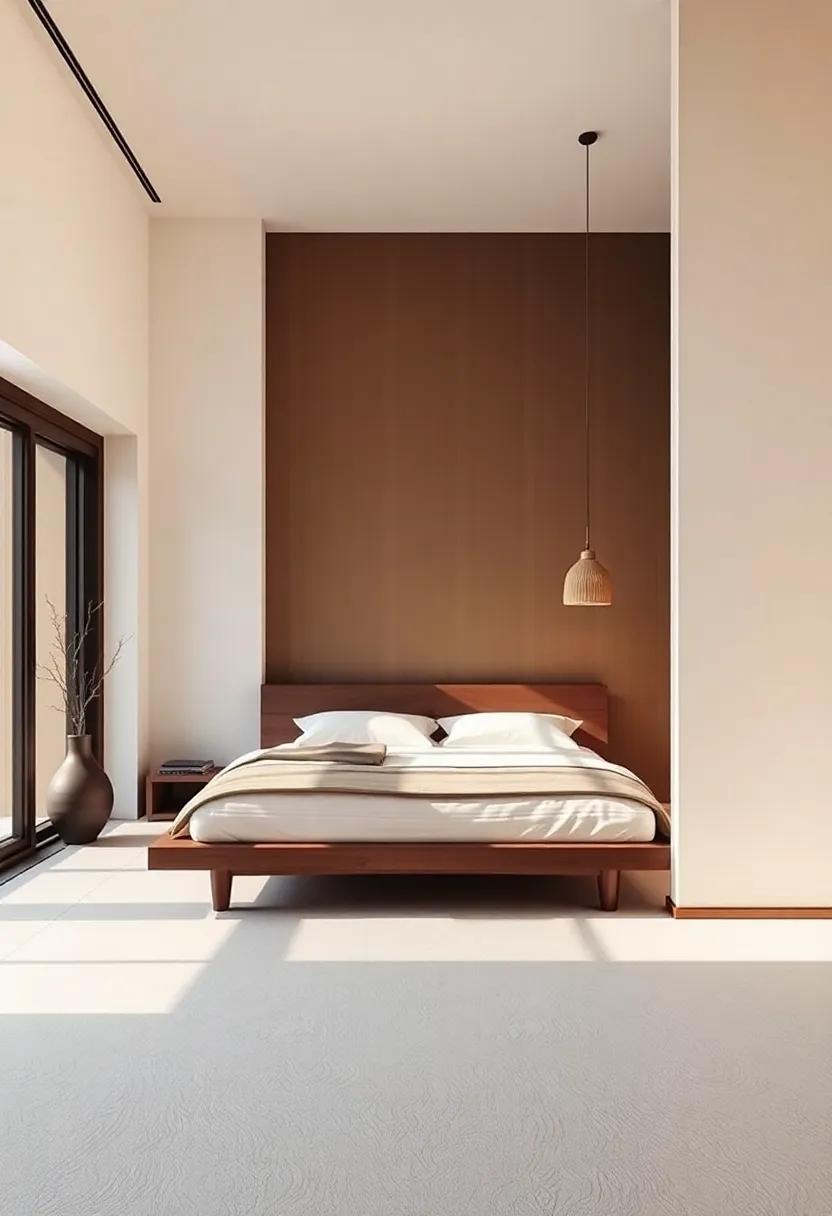
The essence of minimalism in Japanese bedrooms lies in their ability to create a profound sense of space and calm.This is achieved through the harmonious interplay of natural light, simple furnishings, and uncluttered design. Traditional tatami mats, made from rice straw, provide a soothing underfoot experience while reinforcing the connection to nature. Key elements such as sliding shōji screens not only enhance functionality but also introduce an elegant fluidity between indoor and outdoor environments.The focus remains on the essentials, ensuring that each item serves a purpose while contributing to the overall tranquility of the room.
A thoughtfully curated color palette further enhances the minimalist aesthetic,featuring soft,muted tones that evoke serenity. Shades like warm beige, soft gray, and earthy greens complement the natural materials, fostering an inviting atmosphere.consider incorporating the following elements for a truly tranquil Japanese bedroom design:
- Wooden accents – Use natural wood finishes to add warmth.
- Neutral textiles – Choose bedding and curtains in light, airy fabrics.
- Minimal decor – Limit decoration to a few meaningful pieces, such as calligraphy or a simple bonsai.
- Natural elements – Bring the outside in with plants or stones.
| Element | Purpose |
|---|---|
| Tatami mats | Provide comfort and a natural aesthetic. |
| Shōji Screens | Enhance light flow and privacy. |
| Natural Color Palette | Promote relaxation and harmony. |
| Minimal Decor | Reduce distractions and create focus. |
Light and Shadow: The Role of Natural lighting in Color Choices
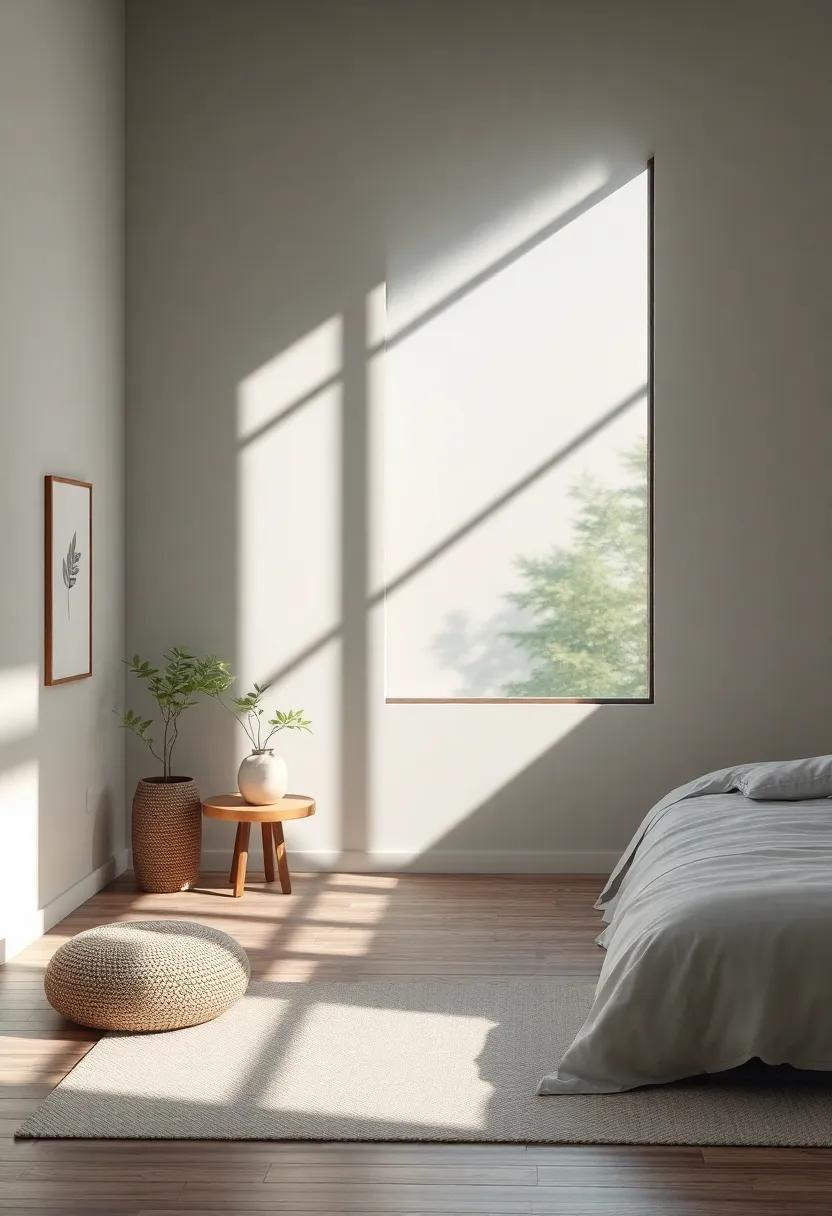
Natural lighting is a vital component in the aesthetic appeal of Japanese-style bedrooms,as it interacts intricately with color choices to evoke tranquility and harmony. Soft, diffused light, allowed to filter through shoji screens, transforms the environment, creating a serene ambiance that accentuates the subtle palette typical of this style. As light plays across surfaces, it enhances softer hues like pale greens, muted earth tones, and soft creams, adding dimension and depth.Each color seems to breathe with the day, adapting to moments, and encouraging a sense of calm and peace. The strategic use of color can amplify these effects, where colors such as warm beige or gentle aqua can contribute to a balanced and soothing atmosphere, welcoming in positivity and restorative energy.
The interplay of light and shadow also influences how colors appear at different times of day, making it essential to consider placement and orientation when selecting tones. For instance, a cool blue might seem soothing in the softer morning light, while in the evening it could evoke a more dramatic depth. Homeowners can utilize specific color combinations to highlight this phenomenon, using dark accents with lighter walls to create contrast while allowing light to navigate through the room. The following table illustrates some ideal color pairings and their effects under varying natural light conditions:
| Color Pairing | Morning Light Effect | Evening Light Effect |
|---|---|---|
| Soft White & Earthy Taupe | Brightens and energizes | Warm and cozy |
| Light Gray & Cool Blue | Calm and refreshing | Mysterious and soothing |
| Pale Green & Soft Yellow | Naturally invigorating | Softly vibrant |
Curating a Color Palette Inspired by Traditional Japanese Art
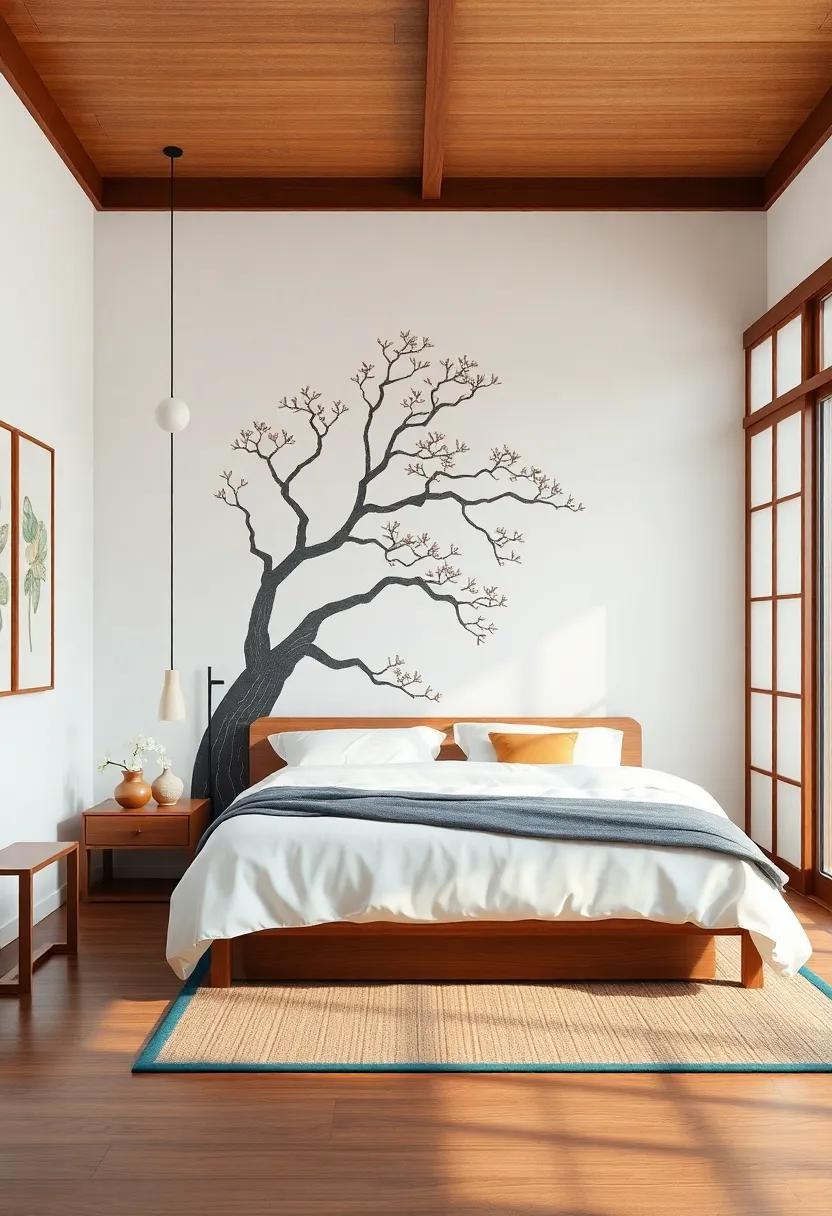
Delving into the soothing world of traditional Japanese art provides an exquisite opportunity to curate a color palette that reflects serenity and balance. The colors used in Japanese aesthetics often mirror nature’s palette, drawing inspiration from landscapes, seasons, and cultural symbols. Soft earthy tones, deep ocean blues, and delicate floral hues come together to create a tranquil atmosphere, conducive to relaxation and mindfulness. Consider incorporating these elements into your color selection:
- Indigo Blue: A calming and deep shade reminiscent of the night sky.
- Muted Greens: Soft moss and sage evoke a sense of fresh tranquility.
- Bamboo Beige: This warm, neutral tone adds warmth and depth to the space.
- Cherry Blossom Pink: A gentle and uplifting color that introduces softness and elegance.
- Crimson Red: Employed sparingly, this hue can evoke passion and energy.
To facilitate a deeper understanding of how these hues work together, a simplified color harmony table can enhance your palette curation process. By juxtaposing the cool and warm tones, you can effortlessly evoke the essence of traditional Japanese artistry.
| Color | Emotion/Effect |
|---|---|
| Indigo Blue | Calmness |
| Bamboo Beige | Warmth |
| Cherry Blossom Pink | Joy |
| Muted Greens | Renewal |
| Crimson Red | Energy |
Serene Textiles: Choosing Fabrics That Complement tranquility
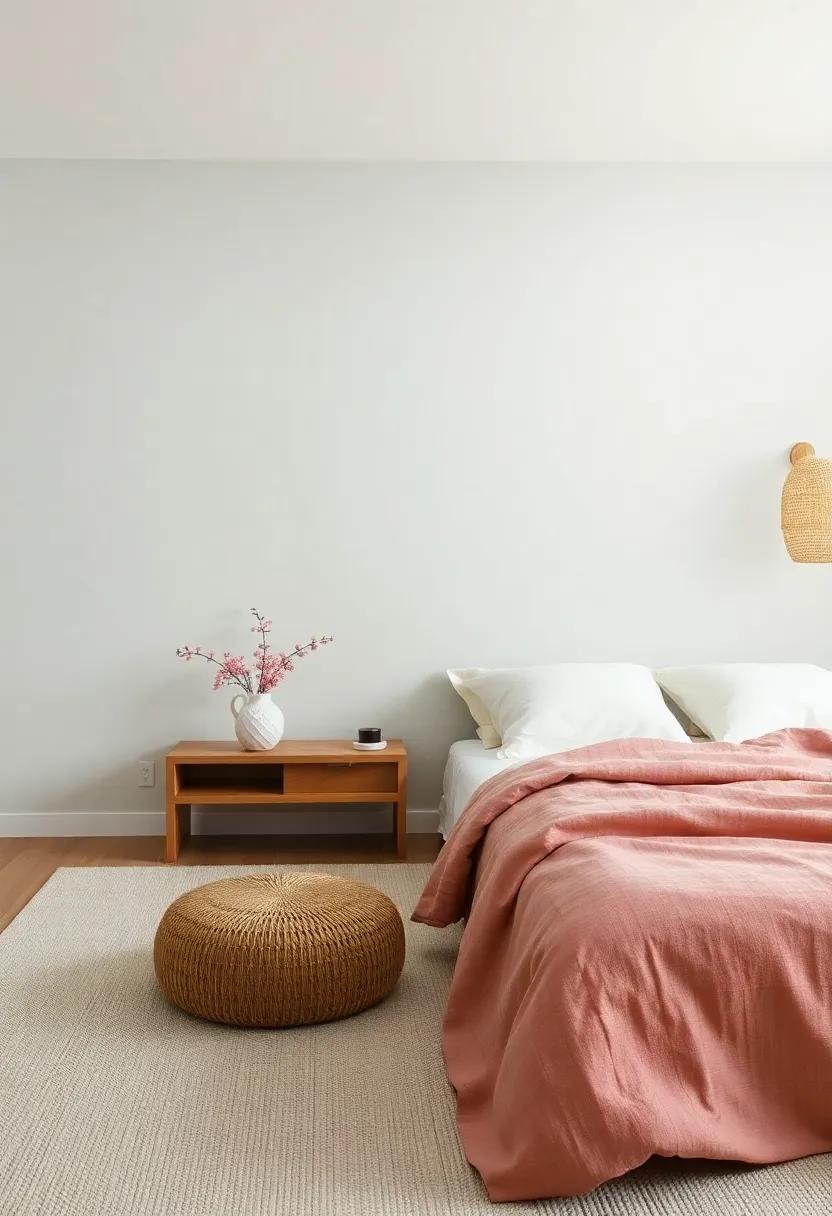
To create a space that embodies tranquility, selecting the right fabrics is essential. Soft,natural materials such as cotton,linen,and silk not only enhance the aesthetic but also contribute to the overall serene atmosphere. These fabrics naturally drape and breathe, allowing for a comfortable environment. when considering color, opt for shades inspired by nature—think muted greens, pale blues, and warm neutrals that evoke a sense of calm. A carefully curated combination of textiles can significantly elevate your room, achieving a harmonious balance between comfort and style.
A well-designed bedroom can benefit greatly from the use of layering, which adds depth while maintaining a tranquil feel. Consider mixing and matching different textures, such as soft throws, minimalist bed linens, and delicate curtains.to guide your choices, hear are some effective pairings that can help cultivate a sense of serenity:
- Lightweight linen curtains paired with subtle cotton bedding
- silk cushion covers on a plush upholstered chair
- Organic cotton throws across a natural fiber rug
For a further refined approach, consider a table to help visualize how various textiles can come together in a cohesive color scheme:
| Fabric Type | Color | Texture |
|---|---|---|
| cotton | Soft White | Smooth |
| Linen | Muted Sage | Textured |
| Silk | Blush Pink | Luxurious |
The Art of Color Blocking: Balancing bold and Muted Shades
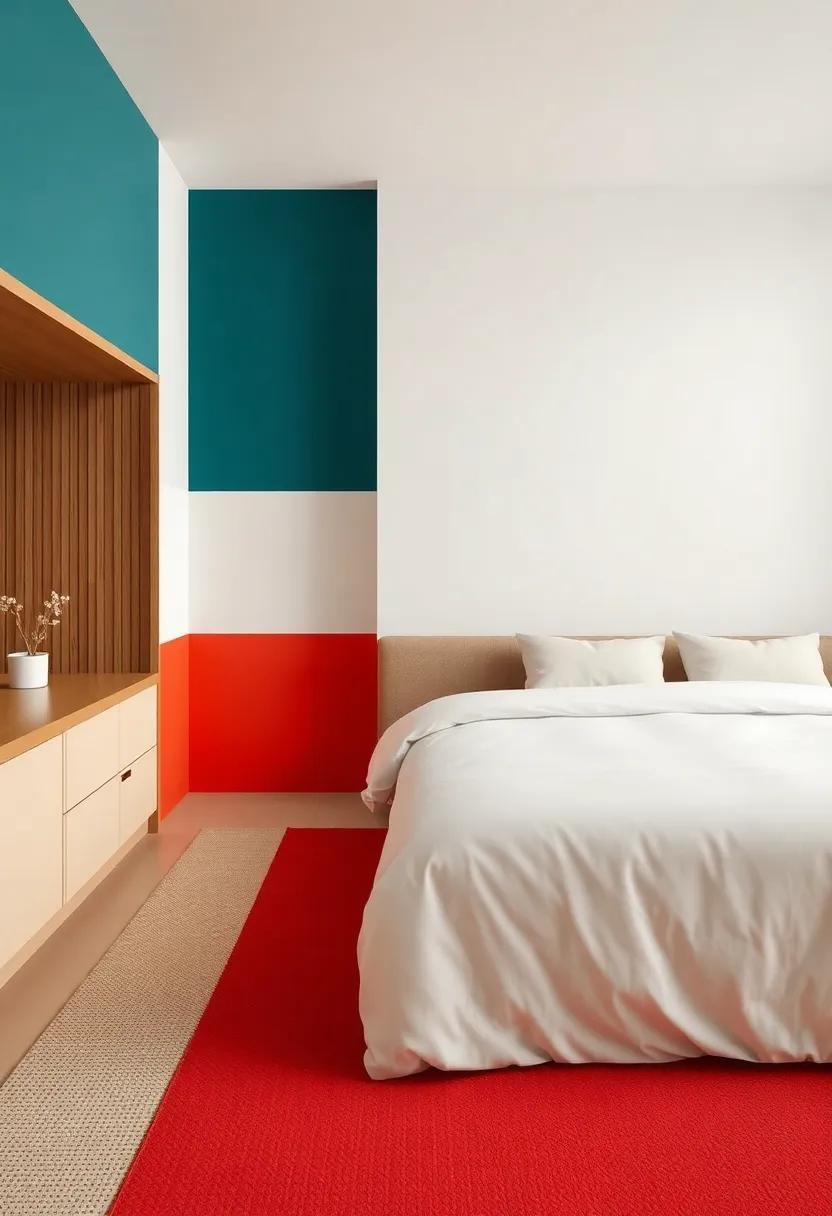
Color blocking is a fascinating technique that invites creativity and intentionality into bedroom design, especially when embracing a japanese-style aesthetic. The interplay between bold and muted hues can create a tranquil yet dynamic environment. On one hand,incorporating deep blues or vibrant reds can serve as eye-catching focal points. On the other, pairing these bold colors with soft beiges, gentle greens, or whispering grays helps to maintain a harmonious balance, ensuring that the space feels serene rather than overwhelming. this approach draws upon the Japanese thankfulness for nature and simplicity,allowing individuals to feel both energized and at peace within their personal sanctuary.
To master the art of color blocking in Japanese-style bedrooms, consider the following tips for achieving that perfect balance:
- Use a Base Color: Start with a muted base like soft taupe or cool gray for your walls to create a calming backdrop.
- Layer with Accent Colors: Introduce bold color accents through textiles, artwork, or decorative pieces.Think rich indigo or cherry blossom pink.
- focus on Natural Textures: Incorporate wood, stone, and textiles that enhance the color palette while remaining aligned with nature.
- Incorporate Light: Utilize natural light to soften bold shades, highlighting the gentle flow of color throughout the room.
By thoughtfully selecting and combining these shades,you can transform any bedroom into a tranquil haven that resonates with the essence of Japanese design.
Natural Wood Tones: Creating Warmth in Your bedroom Space
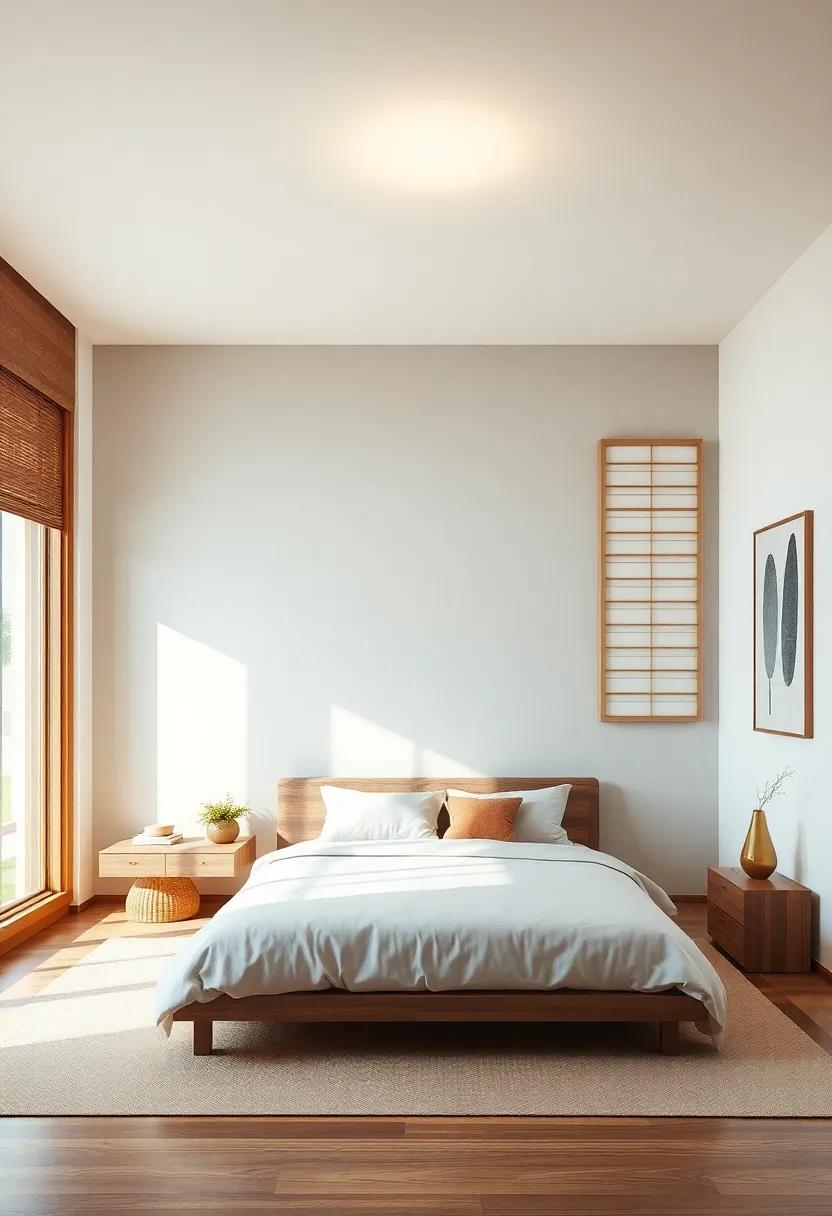
Incorporating natural wood tones into your bedroom creates a cozy, inviting atmosphere that mirrors the serenity found in Japanese-style interiors. The warmth of rich oak, ash, or walnut not only enhances the aesthetic appeal of the space but also fosters a sense of calm and tranquility. These earthy hues can be accented with softer colors in your decor, creating a balanced flow that echoes the beauty of nature. Consider the use of wooden furniture pieces, such as bed frames, nightstands, and shelving, to unify the room’s design while ensuring that the space feels grounded and peaceful.
To truly leverage the beauty of natural wood tones, combine them with strategic accent colors and textures. Natural textiles like linen and cotton can soften the look, while plants and greenery introduce a refreshing element. Here are some ideas for blending wood tones effectively:
- Layered Textures: use throws and cushions in natural fibers.
- Accent Wall: Consider a wooden feature wall to serve as a focal point.
- Artwork: Choose pieces that incorporate wood elements or earthy tones.
Incorporating indoor Plants for a Pop of Life and Color
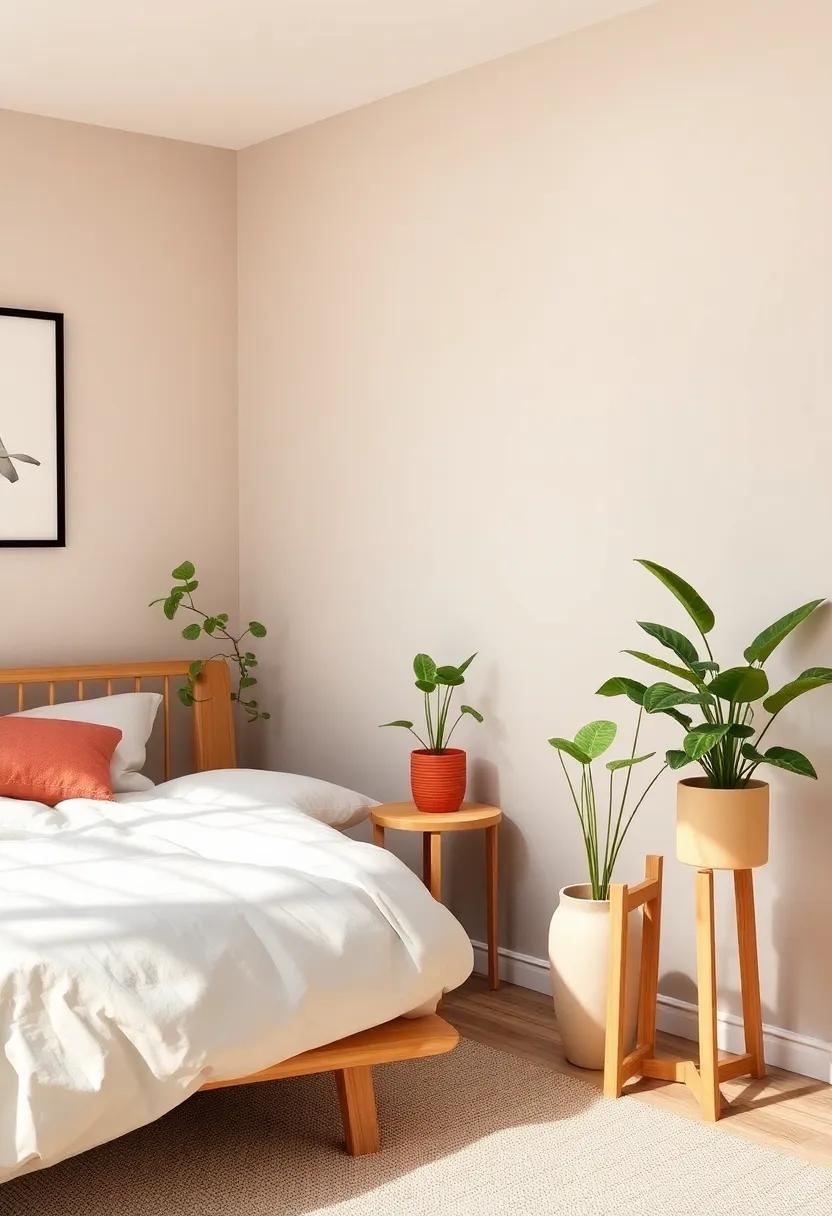
Adding indoor plants to your Japanese-style bedroom can breathe life into the tranquil space,creating a stunning contrast against the serene color palette. Opt for plants that not only thrive indoors but also resonate with the aesthetic principles of simplicity and natural beauty. Consider incorporating the following types of plants:
- Bamboo Palm: Its delicate fronds provide a beautiful texture while promoting clean air.
- Spathiphyllum (Peace Lily): With elegant white blooms,it adds subtle color and elegance.
- Fiddle Leaf Fig: This statement plant can create a dramatic focal point in the room.
- Snake Plant: Known for its resilient nature, it adds a modern touch and requires minimal care.
When arranging your plants, consider their size and growth patterns, ensuring that they complement rather than overcrowd the space. an effective way to display your greenery is through thoughtful vertical arrangements or minimalistic planters that align with the design principles of balance and harmony. Here’s a simple table showcasing ideal plant placements:
| Plant Type | Ideal Placement | Light Requirements |
|---|---|---|
| Bamboo Palm | Corner by the window | Indirect sunlight |
| Spathiphyllum | Nightstand or dresser | Low to medium light |
| Fiddle Leaf Fig | Against a wall | Bright, filtered light |
| Snake Plant | On a shelf | Low light |
By thoughtfully choosing and placing these plants, you can cultivate an inviting atmosphere that enhances the soothing ambiance of your bedroom while introducing vibrant shades of green and occasional blooms.
The Influence of Seasons: Adapting Colors Throughout the Year
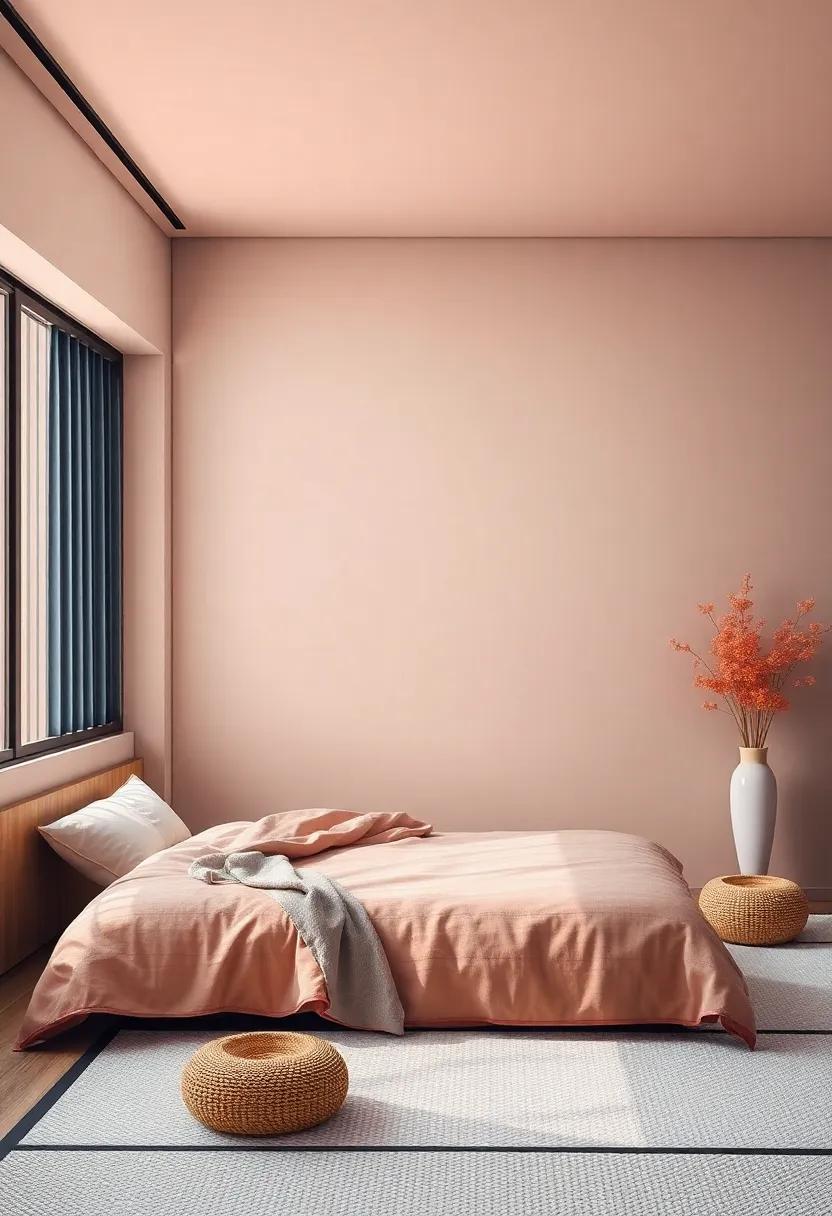
The rhythm of the seasons offers a rich tapestry of inspiration for those seeking to enhance their Japanese-style bedrooms through color.During spring, soft pastel shades like pale pinks and soft greens reflect the delicate blossoms that fill the air with fragrance. As the natural world awakens, adding touches of cherry blossom hues can create a serene environment that resonates with renewal. In contrast, summer invites deeper hues; cool blues and muted greens can mimic the tranquil shade of bamboo.These colors not only evoke feelings of calm but also bring a refreshing balance to the warmth of the sun, making the space feel inviting and cool during hotter months.
Moving into autumn, the palette transforms into rich, earthy tones such as deep reds and warm browns, reminiscent of falling leaves. These colors instill a sense of coziness that complements the essence of the Japanese aesthetic, fostering an environment for relaxation and inward reflection. By winter, the landscape turns colder and more minimalist.Shades of icy blues and whites can mirror a snowy landscape, emphasizing simplicity and tranquility while promoting peace and stillness in the bedroom. Adapting color schemes seasonally not only aligns with nature but also enriches the ambiance, making each moment spent in the bedroom a harmonious experience.
Feng Shui Principles: Aligning Colors for Harmonic Energy
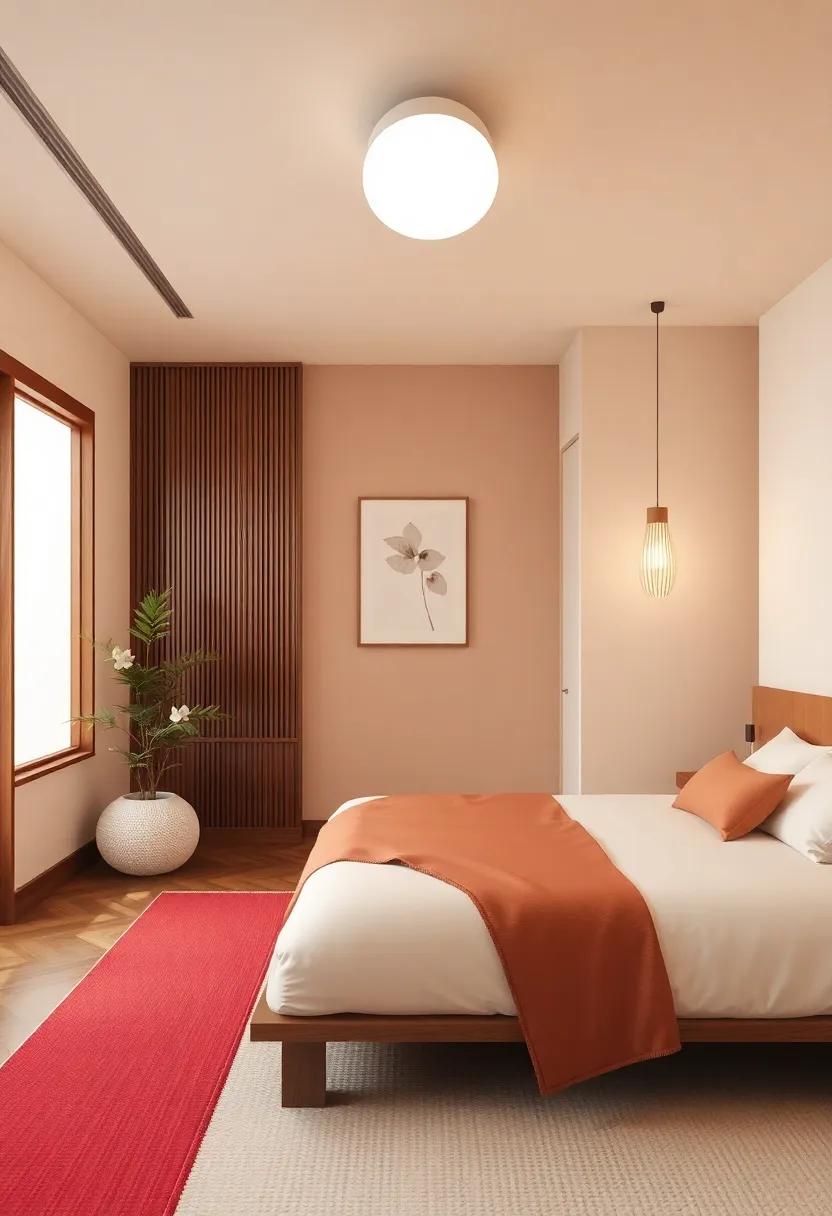
The essence of Feng Shui emphasizes balance and the precise use of color to cultivate a nurturing environment. In a Japanese-style bedroom, choosing colors involves a delicate dance between the five elements—wood, fire, earth, metal, and water. Each hue resonates with a specific energy that can transform the atmosphere of the room. As an example,soft greens and blues evoke calmness and inspire tranquility,aligning with the principles that promote relaxation and restful sleep.consider incorporating subtle shades like:
- Soft Sage Green: Symbolizing growth and renewal,this color invites nature indoors.
- Pale Sky Blue: A shade that promotes serenity and fosters a peaceful sense of space.
- warm Neutrals: Creams and beiges create a soothing foundation that enhances warmth and comfort.
When designing with these colors, it’s essential to examine their placement carefully. According to Feng Shui doctrine,the ideal arrangement of colors not only unifies the visual aesthetic but also encourages harmonious energy flow throughout the space. The impact of different colors can be enhanced by integrating aspects such as natural light and texture.Here’s a simple table that distills color attributes and their corresponding energies:
| Color | Associated Element | Energy Type |
|---|---|---|
| soft Sage Green | wood | Growth & Renewal |
| Pale Sky blue | Water | Calm & Serenity |
| Warm Neutral Beiges | Earth | stability & Comfort |
Creating contrast: Using Darker Hues for Visual Depth
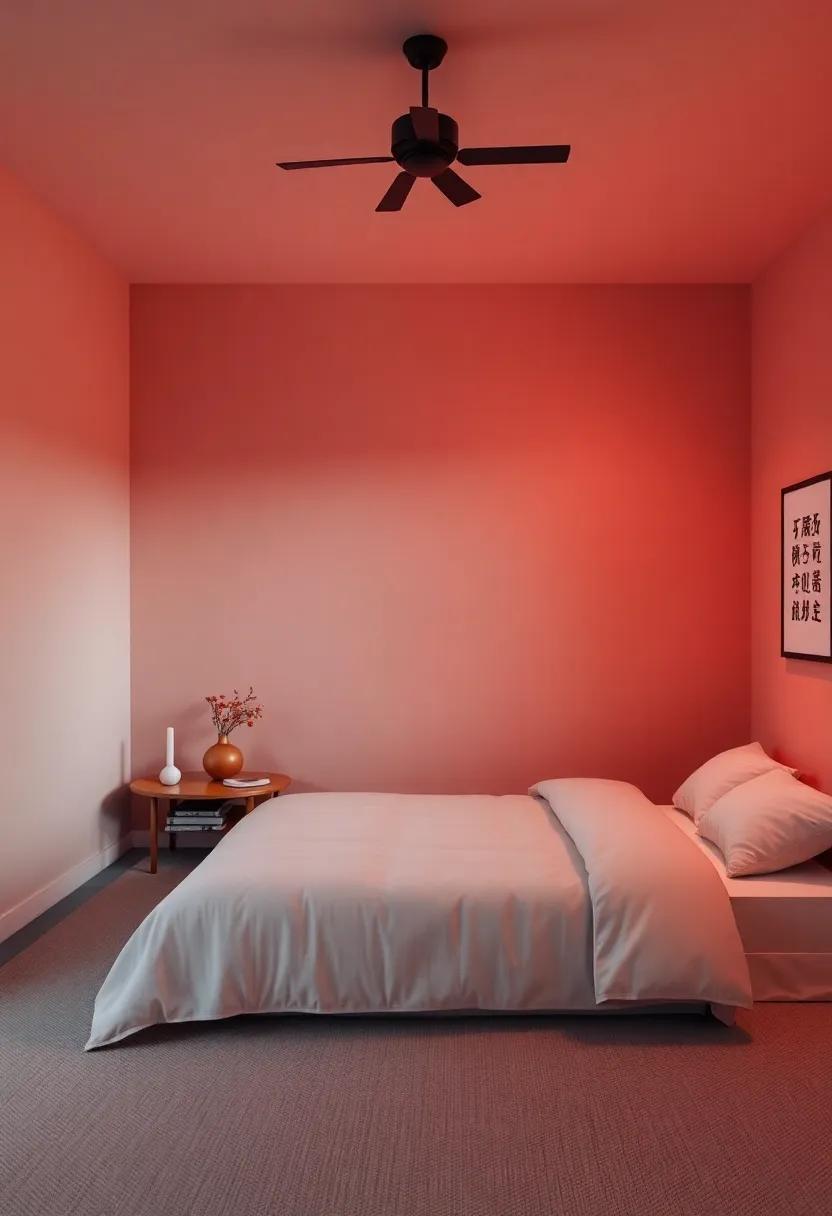
Utilizing darker hues in your Japanese-style bedroom design can significantly enhance visual depth, creating an inviting atmosphere that speaks of serenity and introspection.Consider incorporating deep blues, rich browns, or charcoal grays as focal points in your decor. These colors can be applied in various forms, from accent walls and textiles to artwork and furniture. Their presence not only anchors lighter hues, like soft whites and pastels, but also forms a tranquil backdrop that enriches the overall ambiance. Deep colors, when balanced effectively, bring a cozy intimacy to the space, inviting rest and relaxation.
When introducing darker tones, it’s essential to maintain equilibrium within the palette. Here are a few tips to ensure harmony:
- Contrast with Light Colors: Pair darker shades with creamy whites or soft beiges to prevent the room from feeling overwhelmingly somber.
- Layer Textures: Incorporate varying textures through materials like wood, silk, and cotton to add dimension, making the darker hues feel more inviting and less stark.
- Limit Dark Elements: Use darker hues sparingly as accent points; this ensures they complement rather than dominate the space.
To visualize this balance, consider the following table that showcases popular darker hues and their ideal lighter companions:
| Darker Hue | Best Pairing |
|---|---|
| Deep Blue | Creamy White |
| Rich Brown | Soft beige |
| Charcoal Gray | Pale Gray |
layering Textures: Creating a Rich Yet Subdued Atmosphere
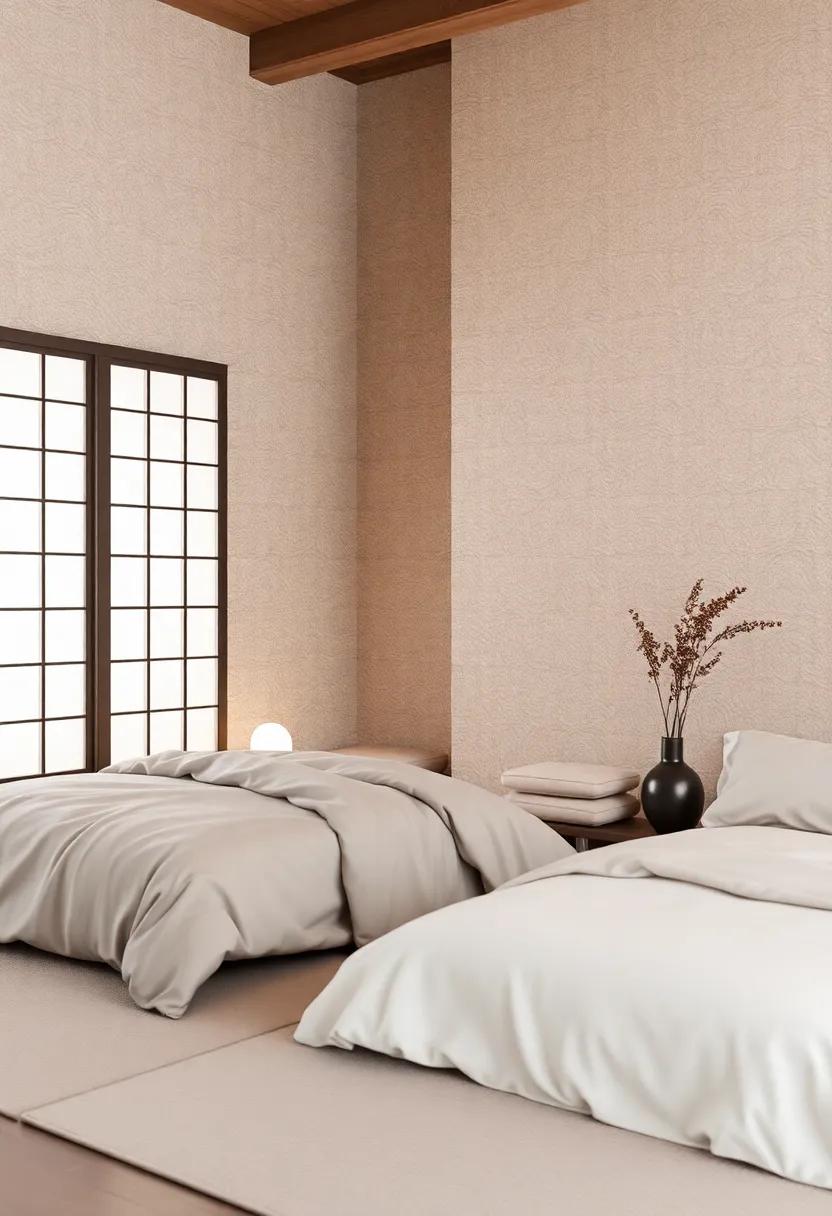
In a well-executed Japanese-style bedroom, the beauty lies in the subtle interplay of textures, which creates a layered experience that invites calmness. Incorporating natural materials such as bamboo, cotton, and linen adds depth to the overall aesthetic without overpowering the serene color palette. When arranging these textures, consider using a variety of fabrics in shades of muted earth tones—this provides a canvas that welcomes simplicity and sophistication. The layered effect can be achieved by:
- Mixing different fabric weights for bedding
- Adding woven baskets or wooden elements for a touch of nature
- Integrating textured wall hangings or soft throw pillows
To further enhance this calming environment, the careful placement of tactile surfaces is essential. Choose a neutral area rug that invites warmth underfoot while complementing the other textures in the room. This harmonious layering not only enriches the atmosphere but also promotes a sense of relaxation. Below is a simple table summarizing some texture combinations that work beautifully in this type of space:
| Texture | Material | Effect |
|---|---|---|
| Soft linens | Cotton | Light and airy |
| Natural fiber rugs | Sisal or Jute | Grounding and cozy |
| Woven decorations | Bamboo | Organic and rustic |
Capturing Nature’s Palette: Inspiration from japanese Landscapes
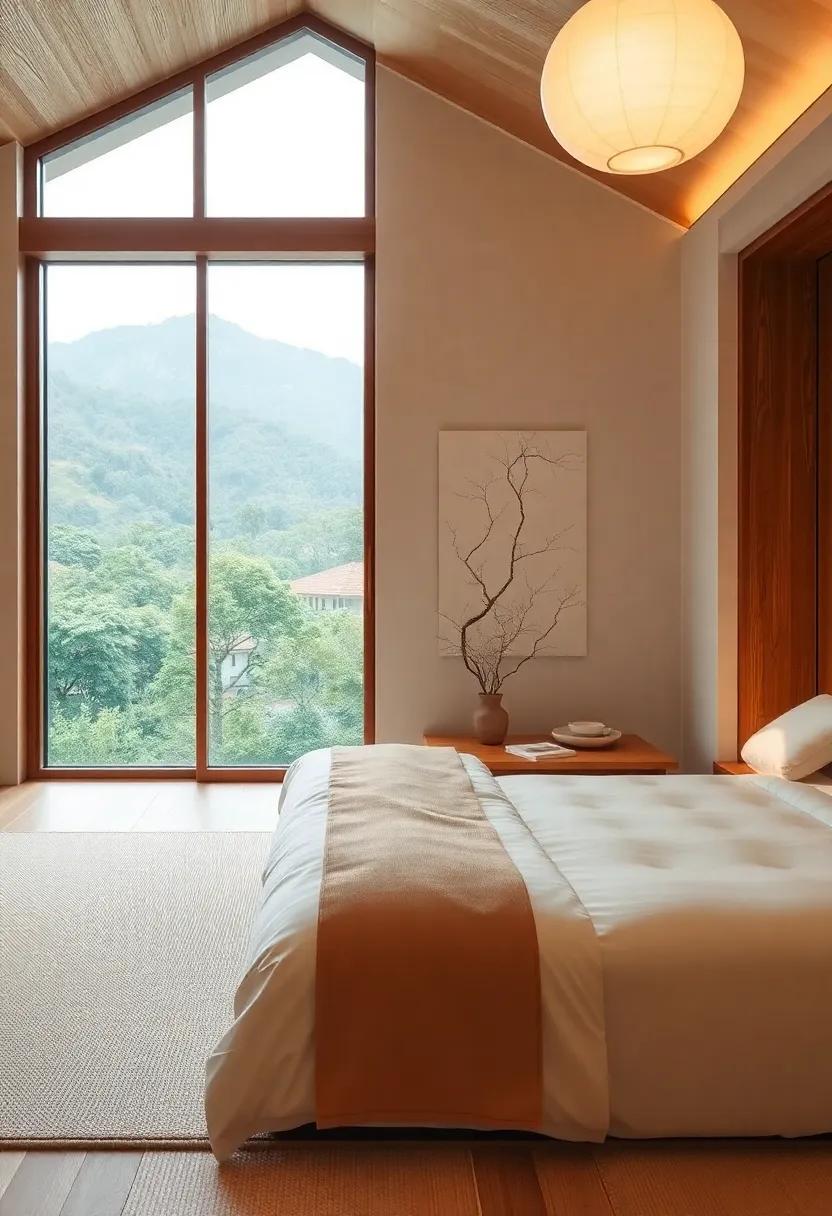
Nature’s beauty has inspired artists and designers for centuries, and Japanese landscapes are a treasure trove of visual inspiration, offering a harmonious blend of colors that evoke peace and tranquility. Rich, earthy tones of deep greens and soft browns reflect the serenity of ancient forested mountains, while delicate washes of pastel pinks and creamy whites mimic the ethereal beauty of cherry blossoms in full bloom. These colors can transport us to a quiet garden amidst the hustle of modern life, creating a sanctuary within our bedrooms that promotes relaxation and reflection.
To embody the essence of these landscapes, consider incorporating a minimalist approach that highlights nature’s hues. Elements such as tatami mats, shoji screens, and natural wood furniture can serve as a captivating backdrop to gently placed decor items in muted shades.Create visual contrast with accents in these calming tones:
| Color | Inspiration |
| Soft Peach | Peach Blossoms |
| Dusty Blue | Mountain Mists |
| Forest green | Lush Vegetation |
| Sandy Beige | Zen Gardens |
By thoughtfully selecting decor that resonates with these natural palettes, you can capture the essence of Japan’s tranquil beauty in your personal space. Emphasizing balance and simplicity will ensure that your bedroom becomes not just a place to rest,but a harmonious retreat that nurtures both mind and spirit.
The Symbolism of Colors: Understanding cultural Significance
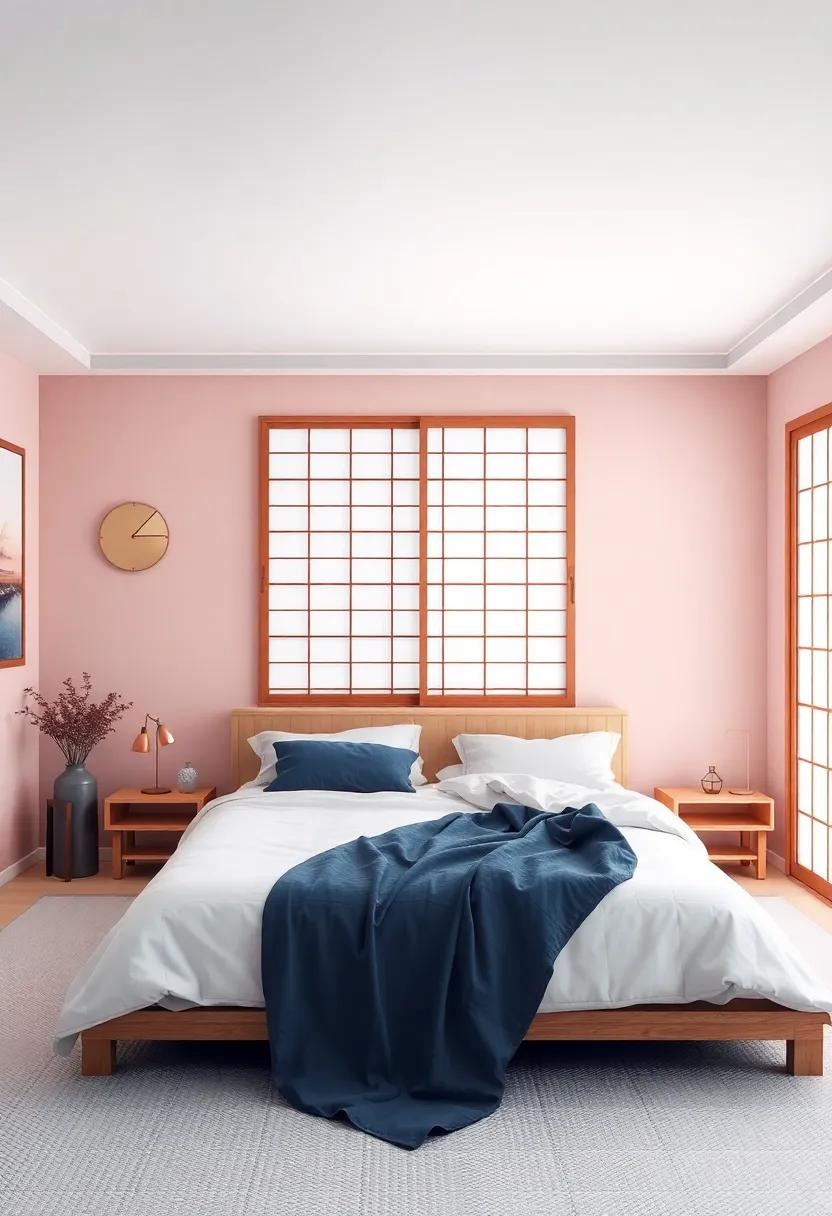
Colors serve as a profound language within cultural contexts, each hue evoking specific emotions and embodying unique meanings. In Japanese culture, the tranquility of natural landscapes is mirrored in the aesthetic choices of interior design, particularly in spaces designated for rest and contemplation. Soft tones such as pastel greens and muted blues evoke the calm of serene forests and gentle rivers, inviting occupants to feel at peace.Furthermore, these colors are often complemented by natural materials, enhancing the connection to nature and fostering a soothing atmosphere conducive to relaxation.
In addition to greens and blues, shades like warm beige and dusty pink contribute to a balanced palette that promotes harmony. Each color holds significance in traditional Japanese culture: for instance, beige symbolizes purity and simplicity, while dusty pink is associated with the fleeting beauty of cherry blossoms. Here’s a brief overview of the symbolism attributed to these colors:
| Color | Symbolism |
|---|---|
| Pastel Green | Growth, tranquility |
| Muted Blue | Peace, serenity |
| Warm Beige | Purity, simplicity |
| Dusty Pink | Fleeting beauty, warmth |
Mood Lighting: Enhancing Colors Through Strategic Illumination
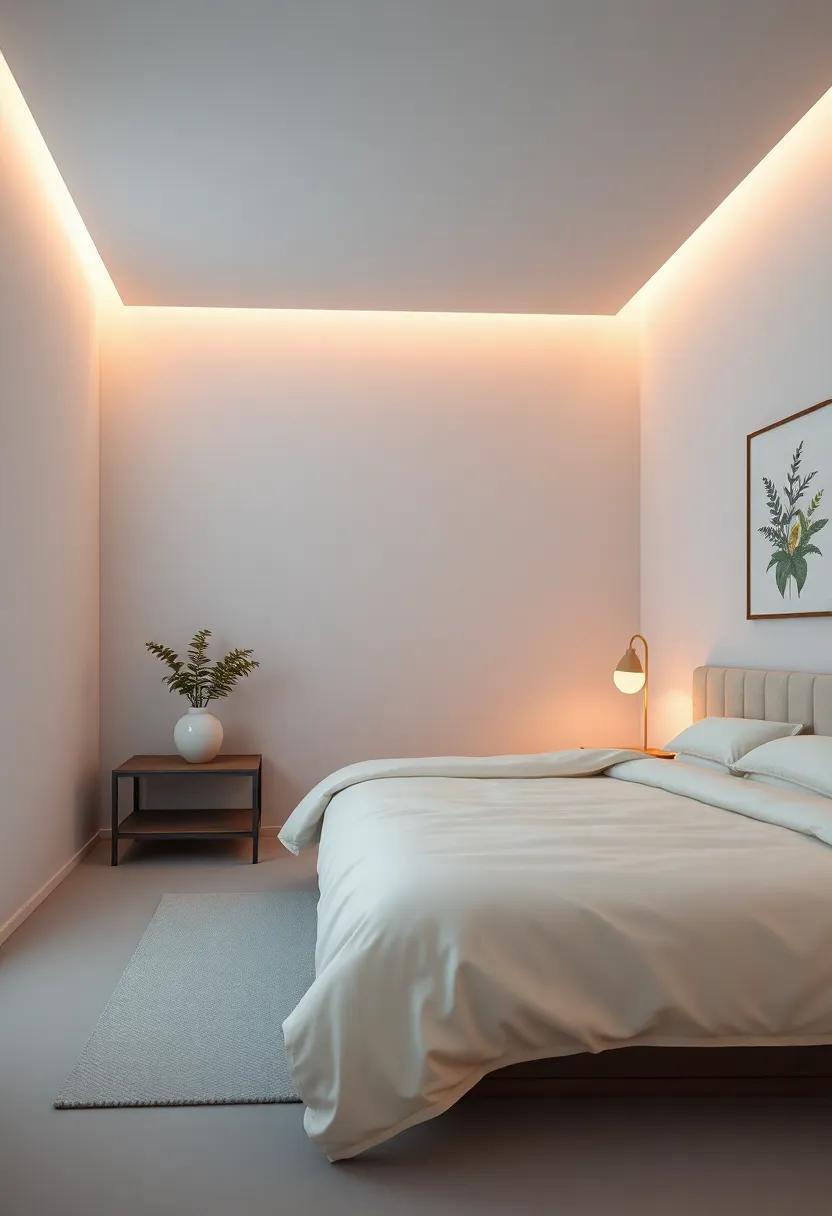
In the serene ambiance of Japanese-style bedrooms, mood lighting plays a pivotal role in enhancing the tranquil color palette. By using soft, diffused light sources, the subtle shades of earthy browns, muted greens, and soft whites can be brought to life. Paper lanterns, table lamps with warm hues, and recessed lighting can create a harmonious atmosphere that complements the calming aesthetics. Strategically placed fixtures not only illuminate key areas but also cast gentle shadows, adding depth and texture to the space.Consider highlighting features like shoji screens or wooden beams, allowing light to interact with natural materials for a soothing visual experience.
To achieve the desired effects, a blend of lighting techniques can be employed. Layered lighting enhances versatility, enabling transitions from bright daytime illumination to soft evening glow with ease. The right color temperature can evoke feelings of calmness; warmer tones around 2700K to 3000K are ideal for creating an inviting,peaceful environment. Here’s a quick overview of various light types and their contributions:
| Light Type | Purpose | Usage |
|---|---|---|
| Floor Lamps | general lighting | Provide soft ambient light in the corners |
| Wall Sconces | Accent lighting | Highlight artwork or architectural details |
| Table Lamps | Task lighting | Reading or focused activities |
| Dimmer Switches | Adjustable brightness | Create a relaxing atmosphere |
By thoughtfully orchestrating the interplay of light and color, Japanese-style bedrooms can transform into peaceful sanctuaries that envelop inhabitants in harmony, fostering relaxation and mindfulness.
Crafting a Personal Retreat with Soothing Color Combinations
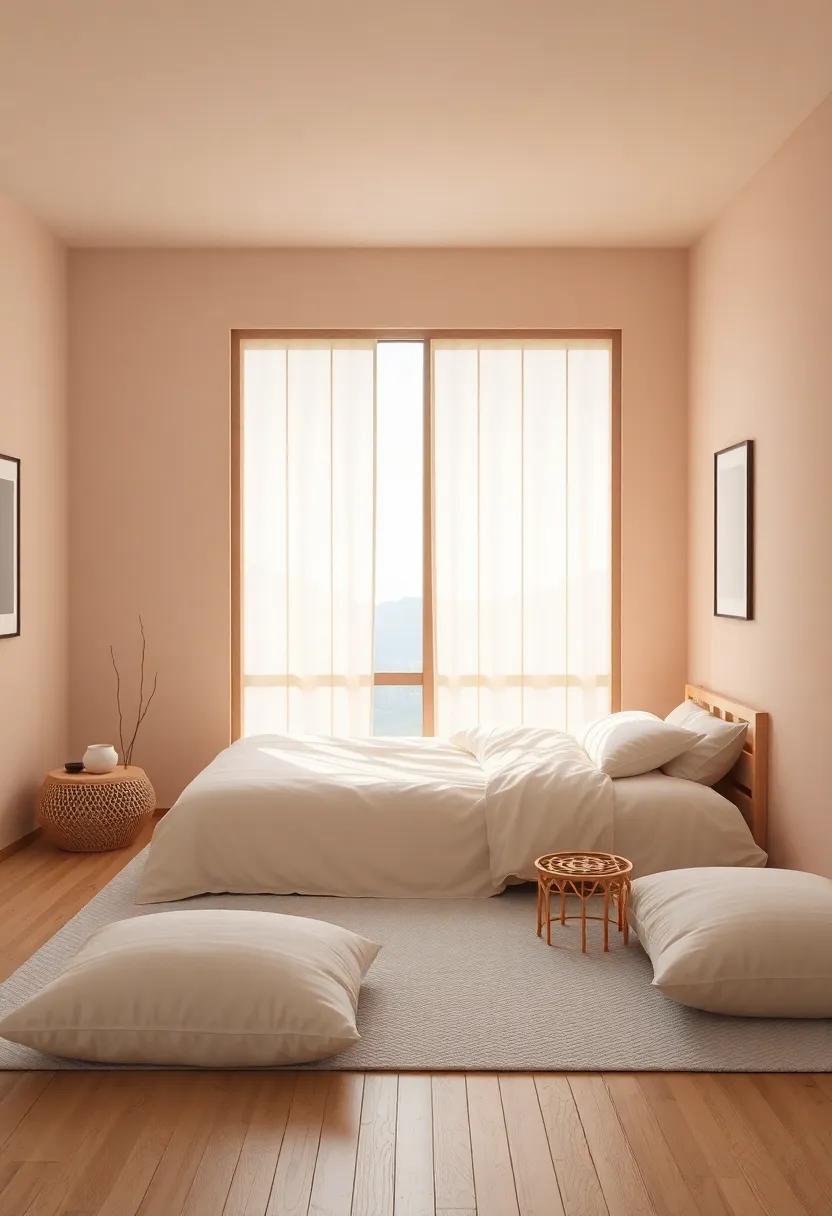
Creating a personal retreat where you can unwind is a beautiful endeavor, and selecting the right color combinations is key to achieving that serene atmosphere. Japanese-style bedrooms frequently enough embody a peaceful and minimalistic aesthetic, prominently featuring colors that evoke a sense of tranquility and harmony. Incorporating gentle shades such as soft greens, muted beiges, and serene blues can help you craft a space that whispers calm. These colors mirror the natural elements found in Japanese gardens, inviting the outside world in, creating a seamless blend between your interior and nature.
To enhance this calming palette, consider using natural materials like wood and stone, which naturally complement the soothing hues. Here are some recommended color pairings that can definitely help establish a serene environment:
- Soft Green & Cream: A refreshing and airy combination.
- Pale Blue & Warm gray: Evokes a gentle sky on a cool day.
- Earthy beige & Dusty Pink: Adds warmth while maintaining softness.
- Muted Lavender & Light Taupe: Introduces calmness with a hint of refinement.
Balancing Warm and Cool Tones for a Harmonious Environment
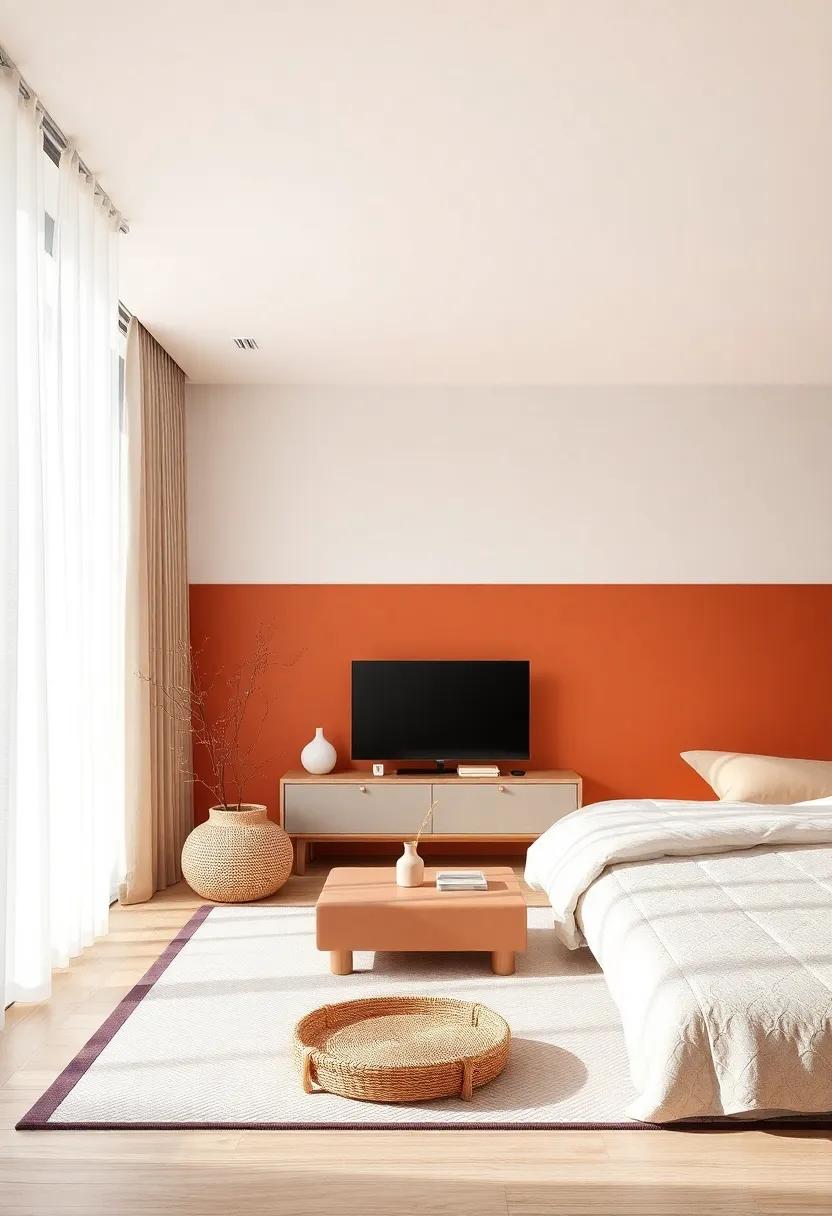
In the serene world of Japanese-style bedrooms, the interplay of warm and cool tones is essential for creating a balanced, tranquil atmosphere. Warm hues such as soft beiges, muted yellows, and gentle terracotta invoke feelings of coziness and invite comfort.when paired with cooler shades like calming blues, soft greens, and serene grays, the result is a harmonious environment that nurtures both relaxation and alertness. this delicate dance between temperatures enables the room to feel both welcoming and refreshing, making it an ideal sanctuary for rest and rejuvenation.
To achieve this equilibrium, consider incorporating varied textures and natural materials that reflect these color palettes. Here are a few effective strategies:
- accent Walls: Paint one wall in a warm tone while keeping the other walls in cooler shades for contrast.
- Soft Furnishings: Use pillows and throws in warm colors against cooler bedding to create layers.
- Art and Decor: Select artworks that feature both warm and cool tones, tying the room together.
A well-thought-out mix of these elements will lead to a space that feels effortlessly serene and inviting, reflecting the beauty of nature and fostering a sense of peace.
Inviting Serenity: Flowing Layouts to Enhance Color Experience
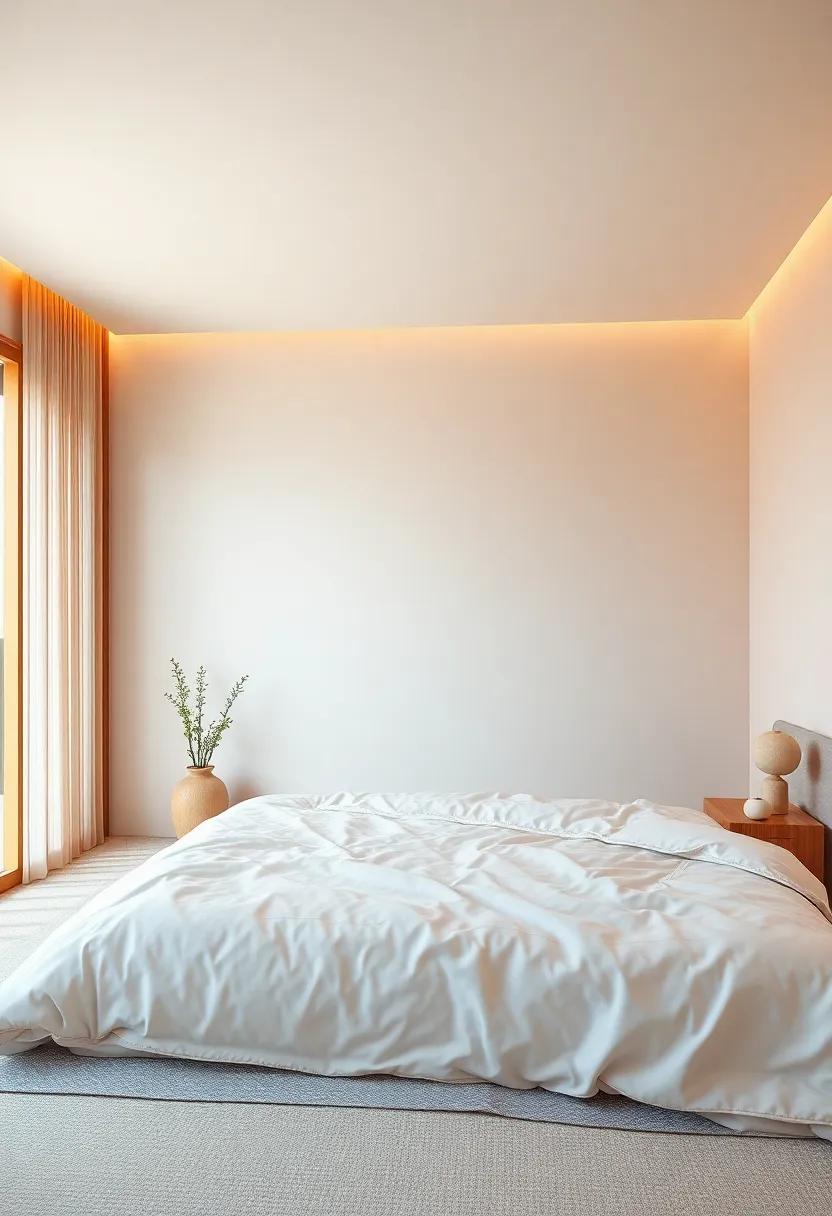
To achieve a sense of tranquility in Japanese-style bedrooms,consider the interplay of colors and spatial layouts. Gentle hues such as soft greens, muted blues, and earthy browns evoke connection to nature, encouraging a calming atmosphere. Incorporating these colors into your layout can be realized through various elements:
- Wall Treatments: Soft paint or natural wood paneling enhances warmth.
- Textiles: Utilize serene fabrics in bedding and curtains.
- Furniture Placement: create open space to promote flow and accessibility.
To further enrich the color experience, implement minimalistic yet powerful design choices. A well-organized decor can highlight these natural tones without overwhelming the senses. Consider a strategic arrangement of colored accents that add depth and variation:
| Accent Color | Suggested Element | Impact |
|---|---|---|
| Coral | Cushions | Add warmth and vibrancy. |
| Pale Yellow | Wall Art | Infuse energy and draw attention. |
| Soft gray | Rugs | Ground the space with elegance. |
Celebrating Simplicity: The Beauty of Uncluttered Spaces
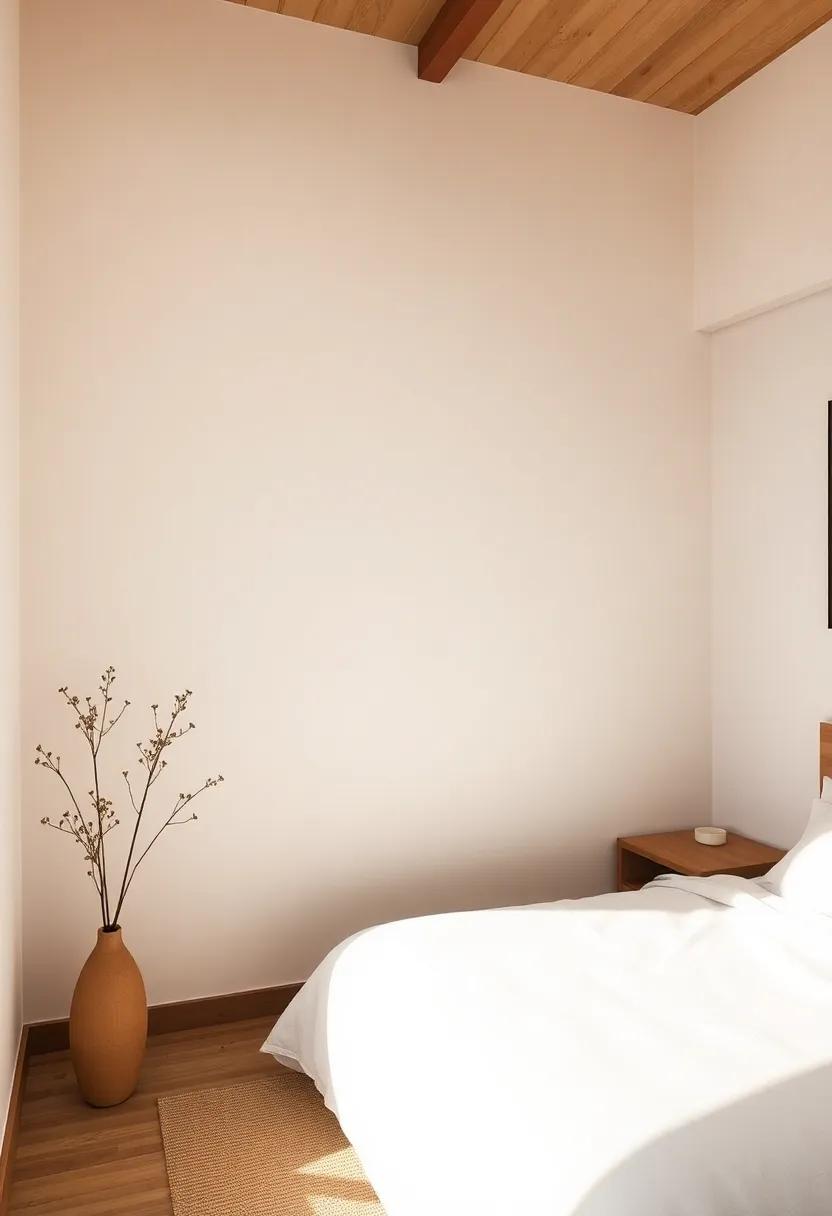
In a world frequently enough overwhelmed by constant stimulation, the allure of minimalism beckons us towards serenity.Japanese-style bedrooms epitomize this ideology, embracing the concept of decluttering not just as a visual strategy but as a lifestyle choice. These spaces invite relaxation and reflection, featuring clean lines, natural materials, and a soothing aura that fosters peace. Each element,from the tatami mats to the shoji screens,plays a purposeful role,creating a haven that allows the mind to unwind and breathe.
The harmonious color palette typical of these bedrooms amplifies the beauty of simplicity. Soft, muted tones—such as warm beiges, gentle greens, and soothing blues—work together to enhance the overall tranquility of the space. The meticulous selection of colors is not just for aesthetics; it reflects nature’s palette, bringing the calming essence of the outdoors inside. Consider the following hues that often grace these serene environments:
| color | Symbolism |
|---|---|
| Warm Beige | Comfort and earthiness |
| Soft Green | Renewal and soothing balance |
| Gentle Blue | calm and tranquility |
| Light gray | Minimalism and elegance |
Integrating Art Pieces: Colorful Accents in a Subdued Setting
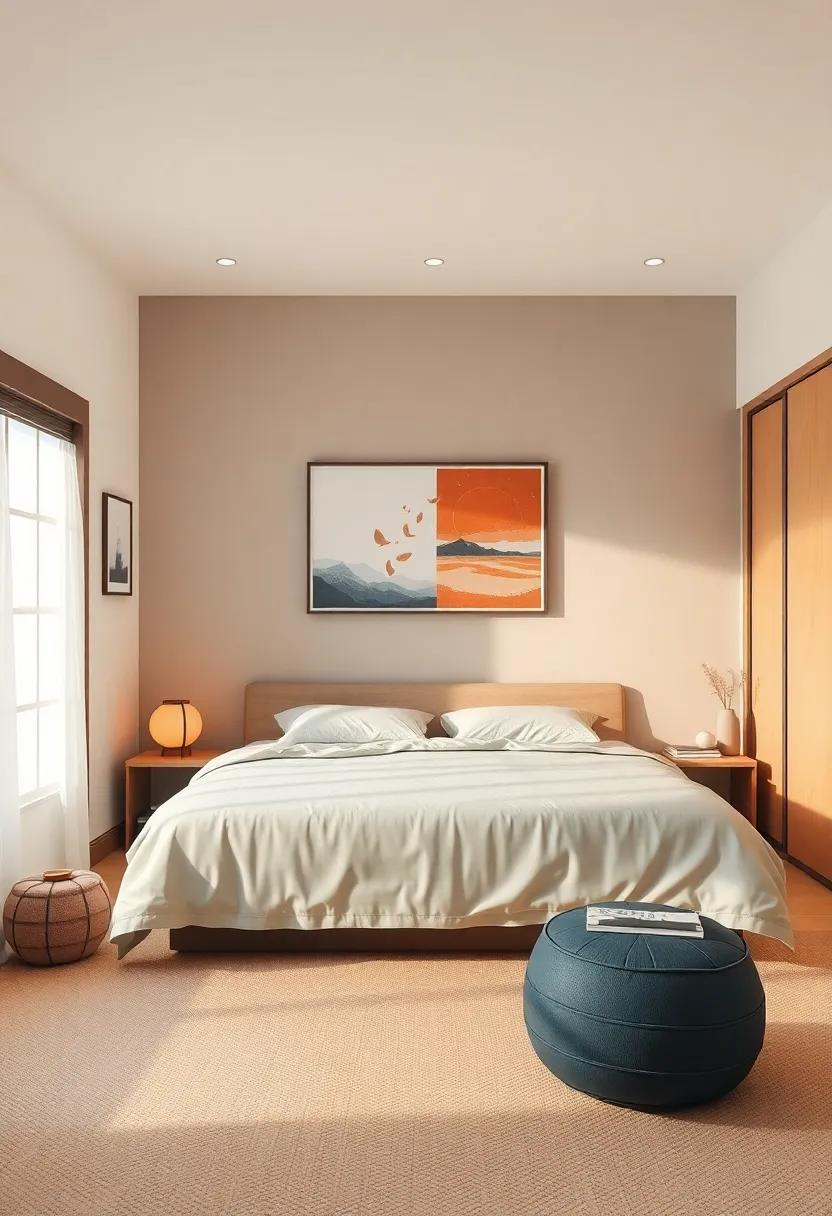
In a Japanese-style bedroom, where tranquility takes center stage, the introduction of vibrant art pieces can create a striking contrast that enhances the overall aesthetic.The key is to choose artwork that resonates with the subtlety of the existing color palette while adding an element of surprise. Consider abstract landscapes or botanical prints that incorporate hues like deep indigo or lush emerald, anchoring the space yet invigorating it with splashes of color. The placement of these art pieces is crucial; framing them in natural wood or simple black frames can seamlessly blend them into the serene environment,allowing them to serve as focal points without overwhelming the senses.
To further enhance the decor, you can incorporate accessories that echo the colors found within the artwork. These could include throw pillows, ceramic vases, or handcrafted textiles that showcase similar shades. Explore combinations such as:
- Turquoise and Coral: Bright yet soothing, these colors can uplift the ambiance while maintaining a relaxed vibe.
- Mustard Yellow and Olive Green: Warm and grounded, these accents create a cozy, inviting atmosphere.
- Crimson and Charcoal: Striking and elegant, this pairing infuses energy without sacrificing serenity.
Creating a balance between vibrant accents and a subdued backdrop not only makes the room visually captivating but also fosters a sense of harmony that reflects the principles of Japanese design.Remember, it’s not just about the individual pieces; it’s about how they come together to form a cohesive sanctuary.
Textured walls: Exploring Paint and Wallpaper Variations
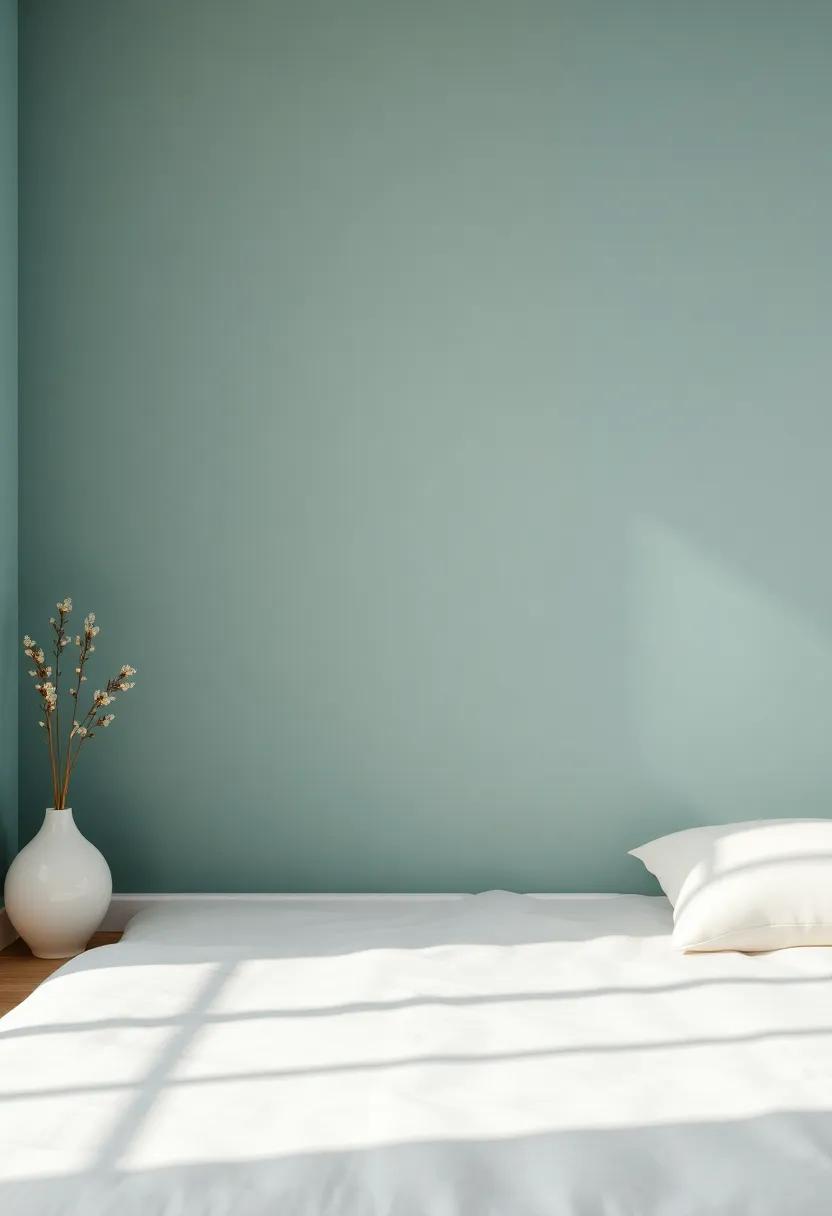
Textured walls bring depth and character to Japanese-style bedrooms, enhancing the serene atmosphere inherent in such spaces. Paint variations can include subtle matting techniques that mimic the natural beauty of traditional tatami mats or the gentle waves of a tranquil sea. Such techniques preserve a sense of harmony, complementing the chosen color palettes. Opting for earthy tones, like soft taupe or muted greens, helps ground the room, creating a soothing retreat. Alternatively, using textured wallpaper can evoke the feel of handcrafted paper or fabrics, reminiscent of traditional Japanese art forms.
To maximize the impact of textured walls, consider the following elements for your design:
- Layered Textures: Combine paint with wallpaper for a unique layered effect.
- Accent Walls: Use a bold textured wallpaper on a single wall to create a focal point.
- Natural Materials: Incorporate wall coverings made from bamboo or rice paper.
The interplay of texture and color can elevate the serene allure of a Japanese-style bedroom. A well-thought-out selection creates a space that not only pleases the eye but also fosters tranquility and meditation.
Creating Zones: Defining Intimate spaces with Color
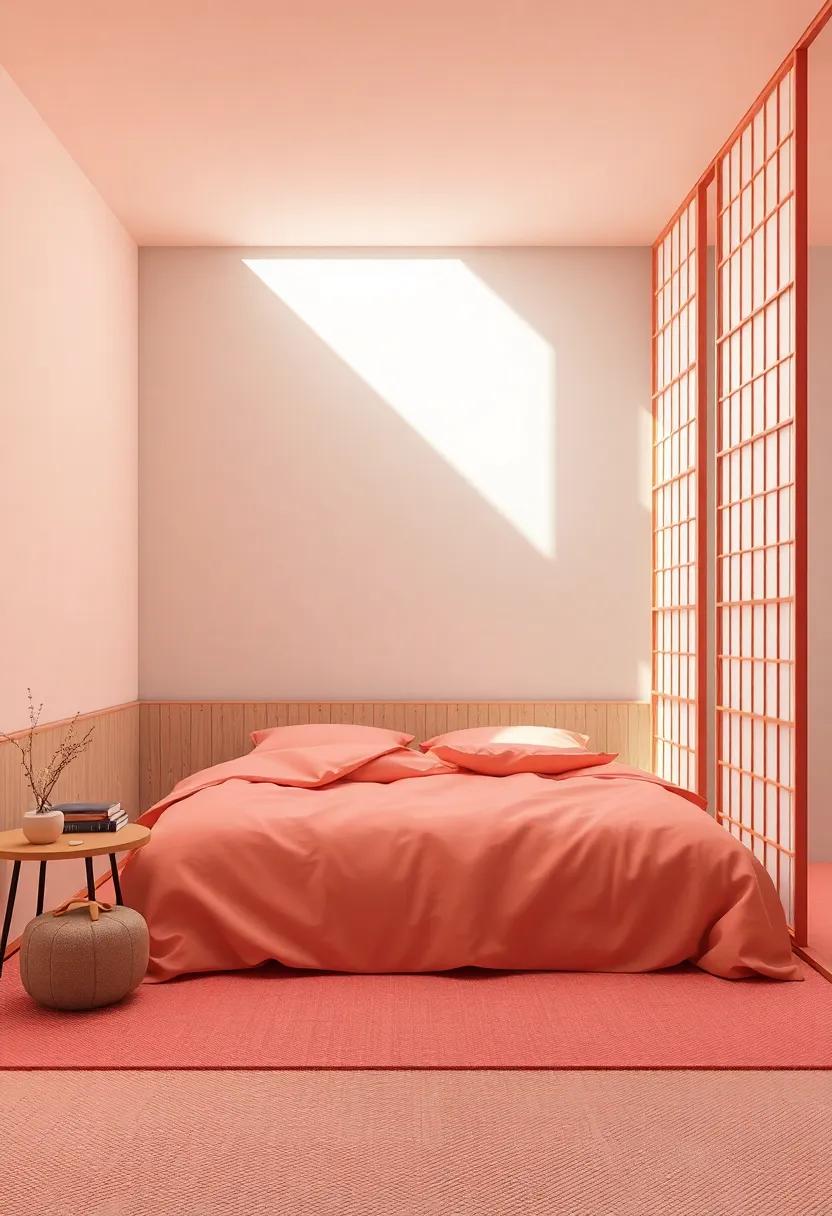
Creating intimate zones within a bedroom can transform the overall atmosphere, allowing for a personal retreat that nurtures relaxation. The careful selection of colors acts as a powerful tool in delineating these spaces. Warm earthy tones, such as soft beiges and muted browns, can evoke a sense of comfort and grounding, while cool greens inspired by nature promote tranquility. By layering these colors through various elements—think of rich pillows, serene wall shades, and textured throws—you can craft areas within the room that invite you to unwind and reflect. A thoughtful submission of color can seamlessly guide the eye and mind to designated spaces, whether it’s a cozy reading nook or a peaceful sleeping area.
Incorporating colors in your design can be enhanced through strategic placement of furniture and decor. Use contrast to create visual breaks; such as,a deep navy accent chair against a soft ivory wall can define a space without overwhelming it.Textures also play an essential role; think of juxtaposing rough wood grains with smooth fabrics to define areas with tangible differences. A simple layout demonstrating color contrasts could resemble the following:
| Color | Area | Purpose |
|---|---|---|
| Soft Beige | Wall | Create warmth |
| Cool Green | Pillows | Add tranquility |
| Deep Navy | Accent Chair | Provide contrast |
| Muted Gray | Rug | Anchor space |
With these concepts in mind,each color will serve not just as a visual anchor,but as an emotional one,shaping your bedroom into a sanctuary that resonates with your sense of peace. Ultimately, the integration of color to define intimate spaces nurtures both functionality and serenity, enhancing the restful qualities inherent in a Japanese-style bedroom.
The Essence of Wabi-Sabi: Embracing Imperfection in Design
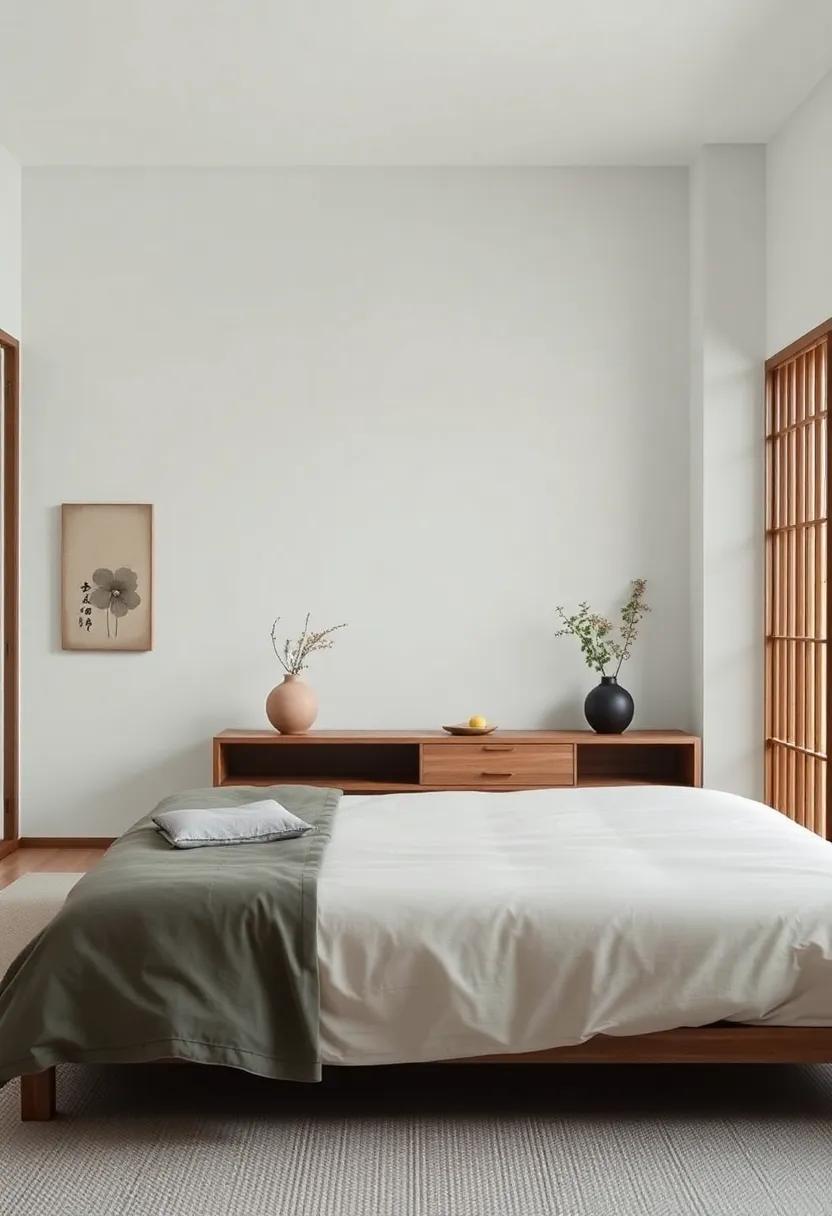
At the heart of Japanese aesthetics lies a profound appreciation for the transient beauty of objects, often expressed as wabi-sabi. This philosophy celebrates the allure of imperfection and the natural cycle of growth and decay, which is reflected in the design choices of a Japanese-style bedroom.By incorporating materials that show wear, such as aged wood and hand-crafted ceramics, one can create a space that feels both authentic and inviting. The beauty of uneven textures or subtle irregularities in these materials invites the eye and fosters an atmosphere of serenity, reminding us that flaws can be as beautiful as perfection.
In color palettes inspired by this philosophy, tranquil hues play a crucial role. Soft, muted shades such as earthy browns, gentle greens, and cool blues work harmoniously to create a calming environment that encourages relaxation and mindfulness. The use of color in a Japanese bedroom should seek to mimic the natural world, emphasizing balance and simplicity. To further enhance this tranquil ambiance, consider the following elements:
- Nature-inspired accents: Incorporating elements like plant life and water features.
- Subtle contrasts: Using a mix of light and dark tones to highlight architectural details.
- Texture layering: Combining fabrics such as silk, linen, and cotton for depth.
Future Outlook
As we conclude our exploration of the serene color palette that defines Japanese-style bedrooms, we invite you to consider the subtle artistry that transforms these spaces into sanctuaries of peace. The harmonious blend of soft hues and natural elements not only fosters a sense of tranquility but also encourages a deeper connection with one’s surroundings. By incorporating these principles into your own home, you can cultivate an environment that echoes the simplicity and elegance of Japanese aesthetics. May your journey into the world of color inspire you to create a personal retreat, where every shade and texture contributes to a richer, more balanced living experience. Embrace the quiet beauty of harmony in hue, and let your bedroom become a canvas for calm.
As an Amazon Associate I earn from qualifying purchases.
 theFASHIONtamer Where Style Meets Space, Effortlessly
theFASHIONtamer Where Style Meets Space, Effortlessly
